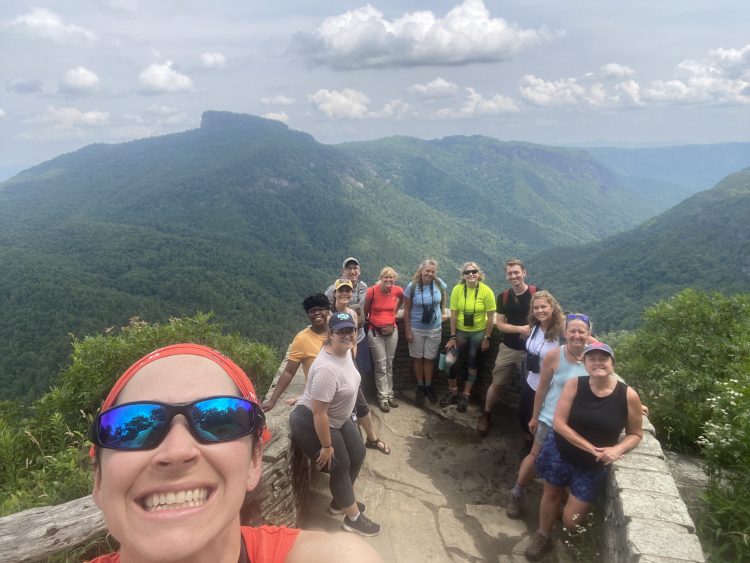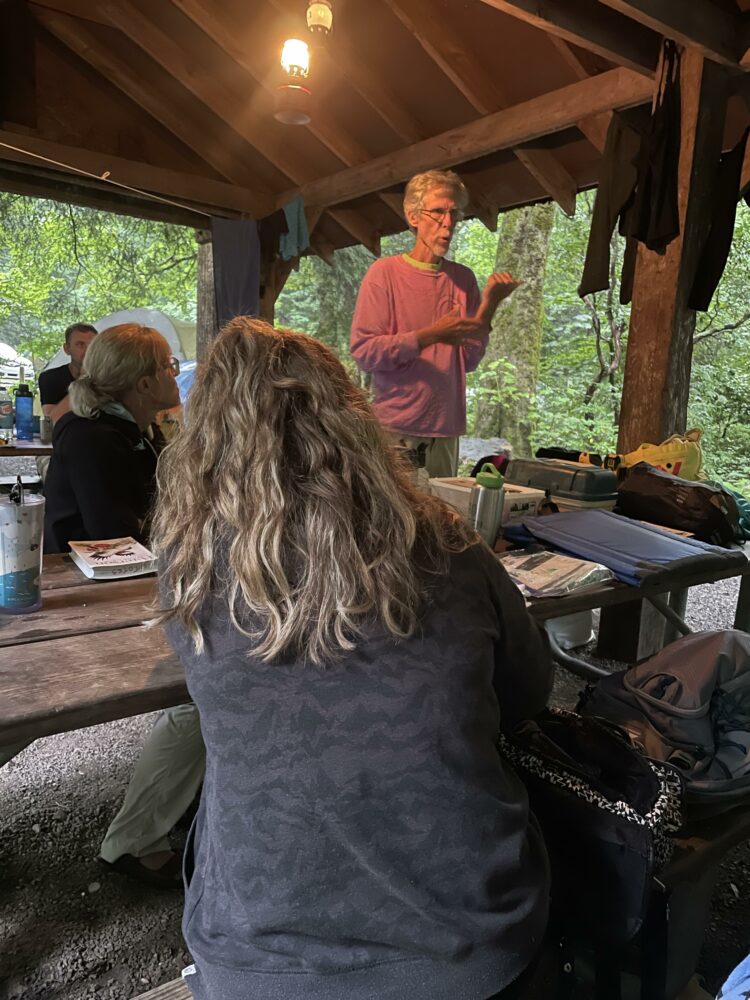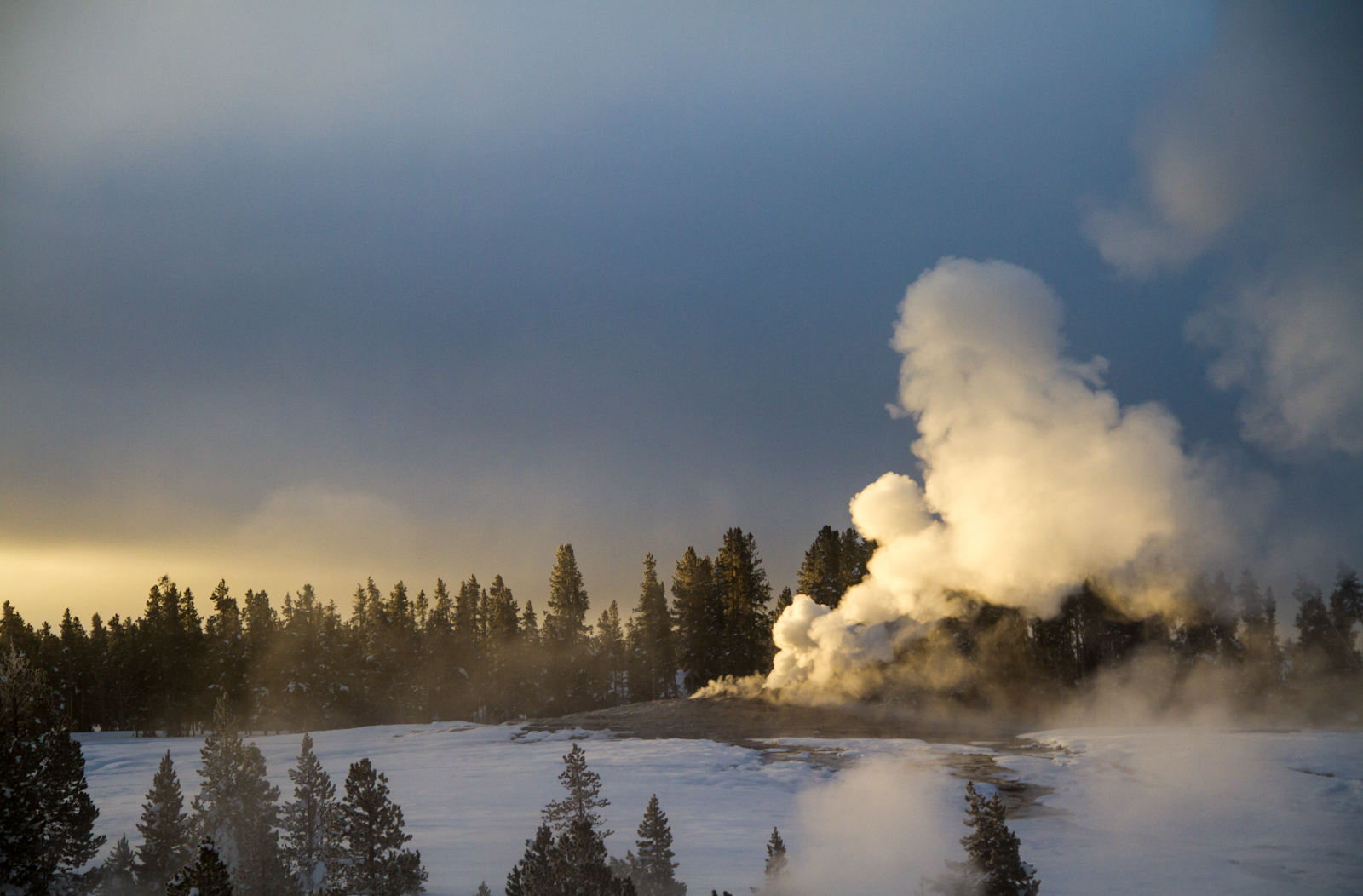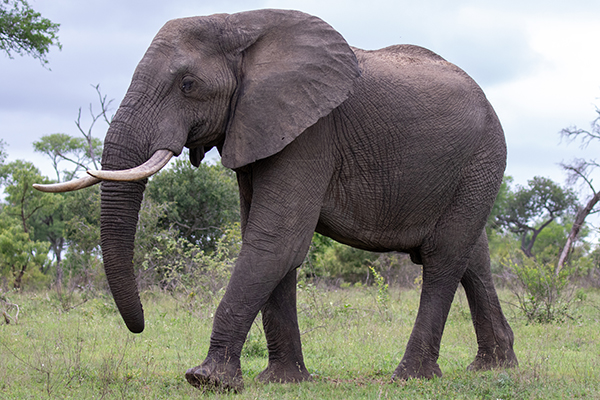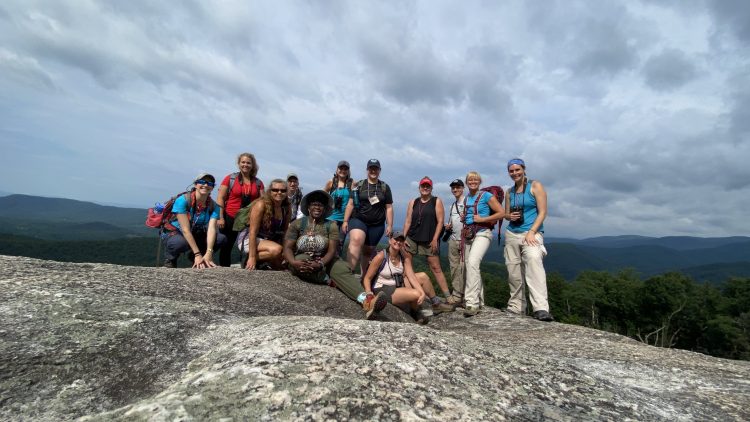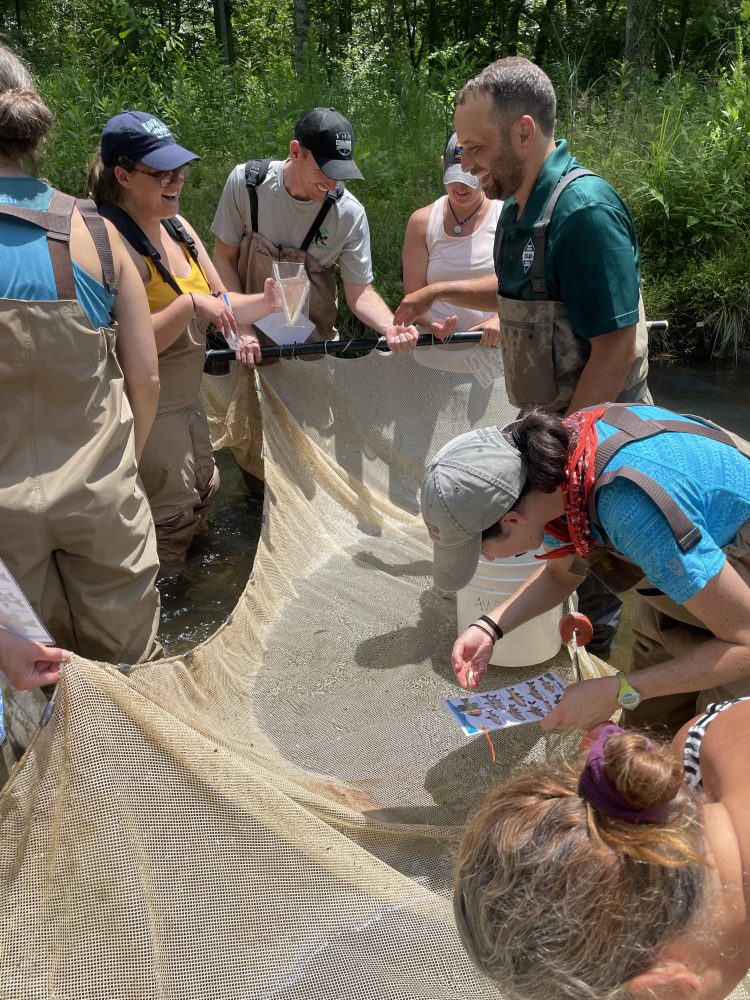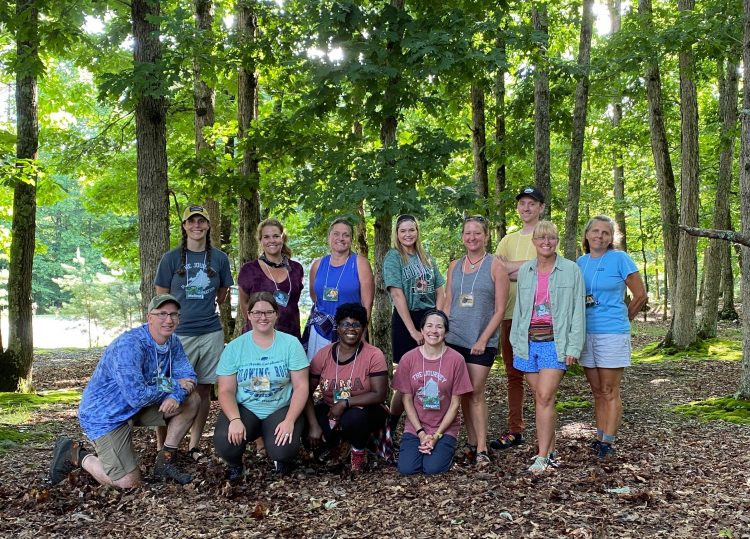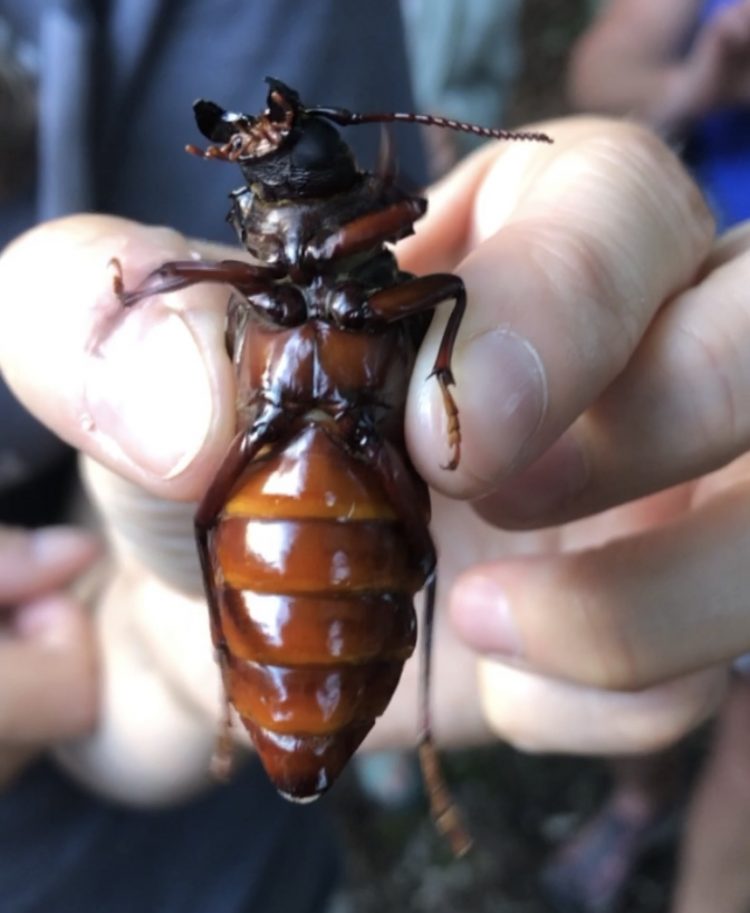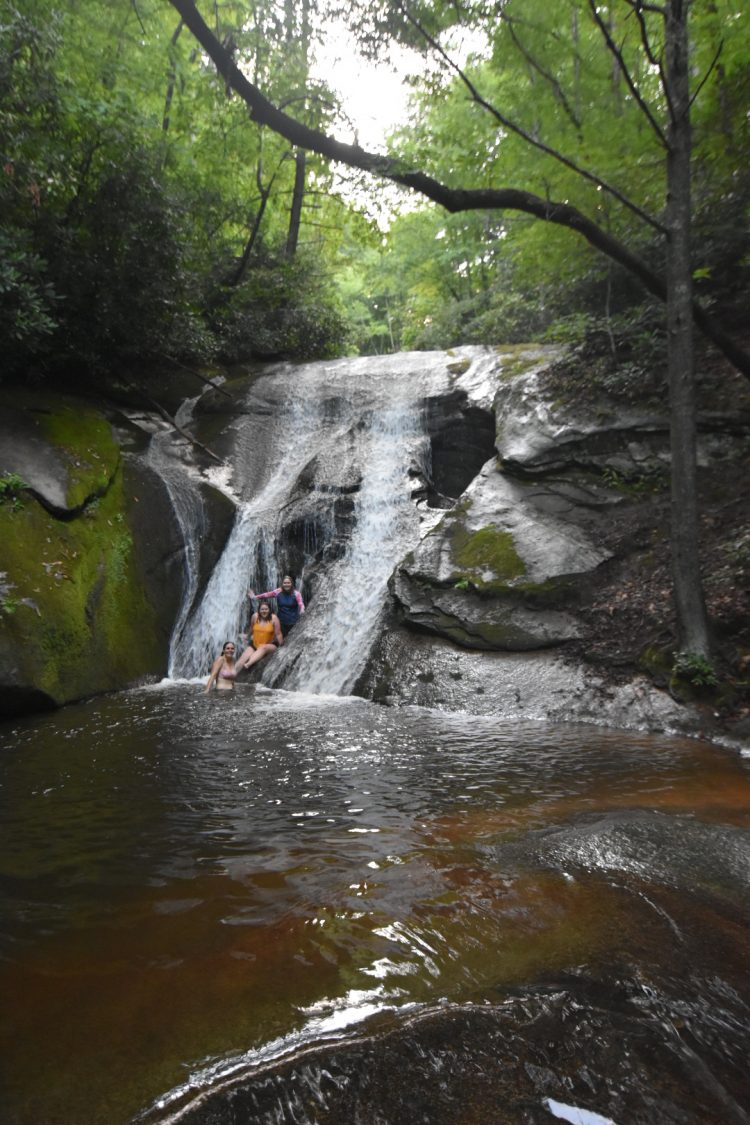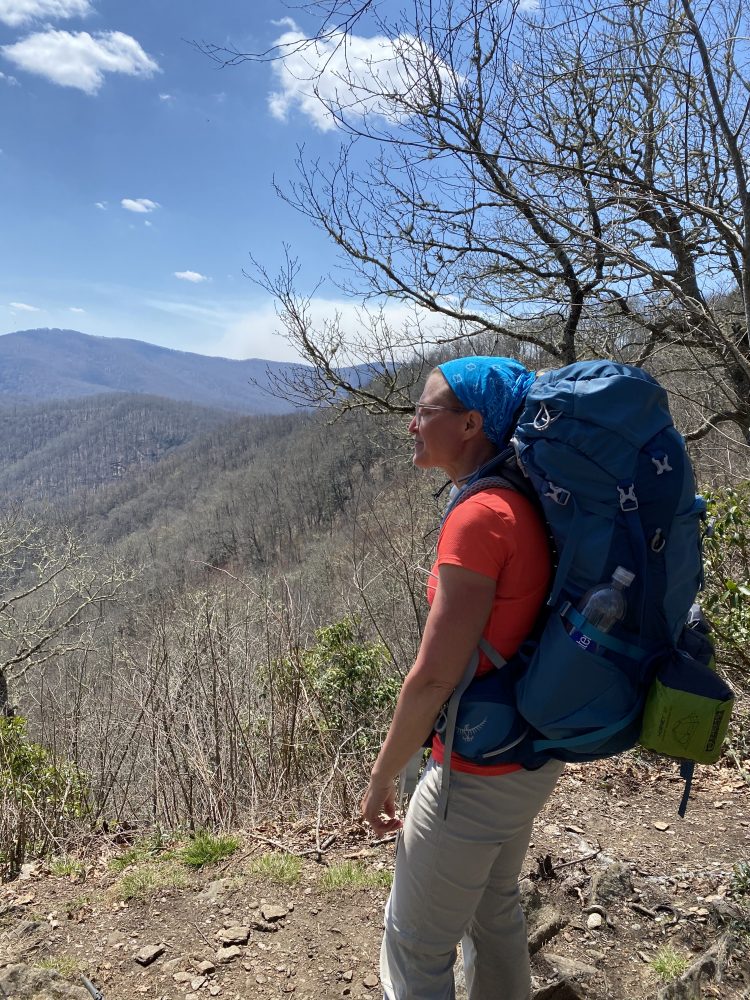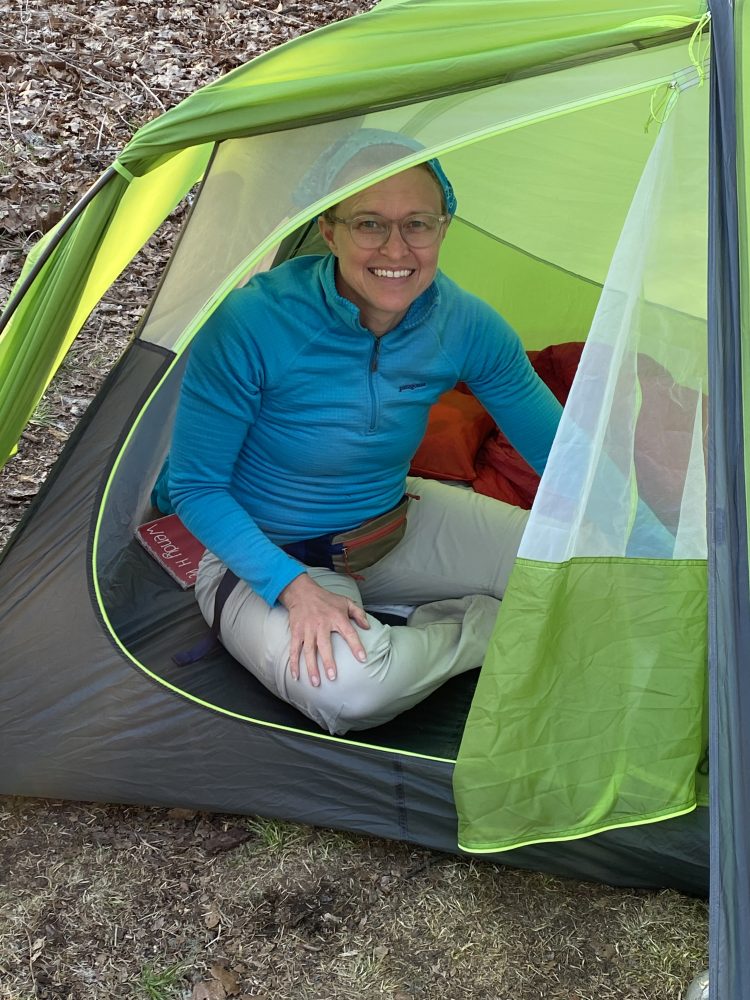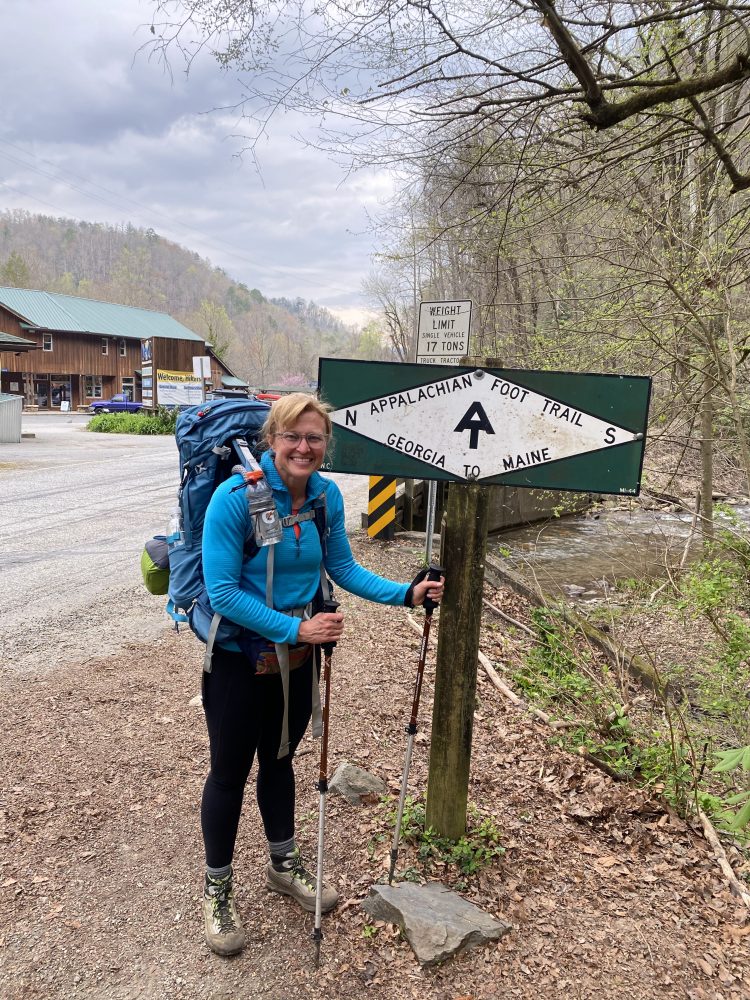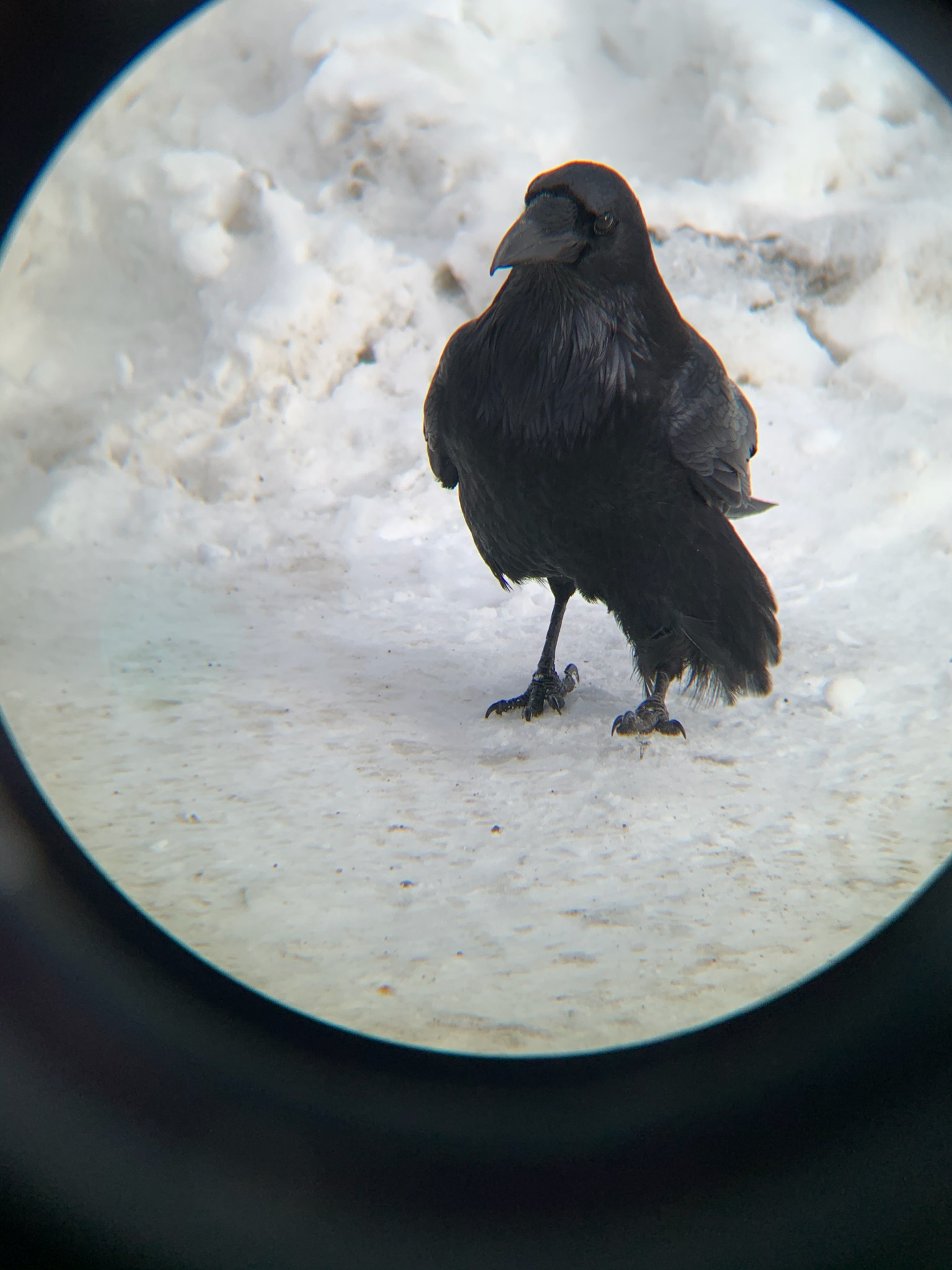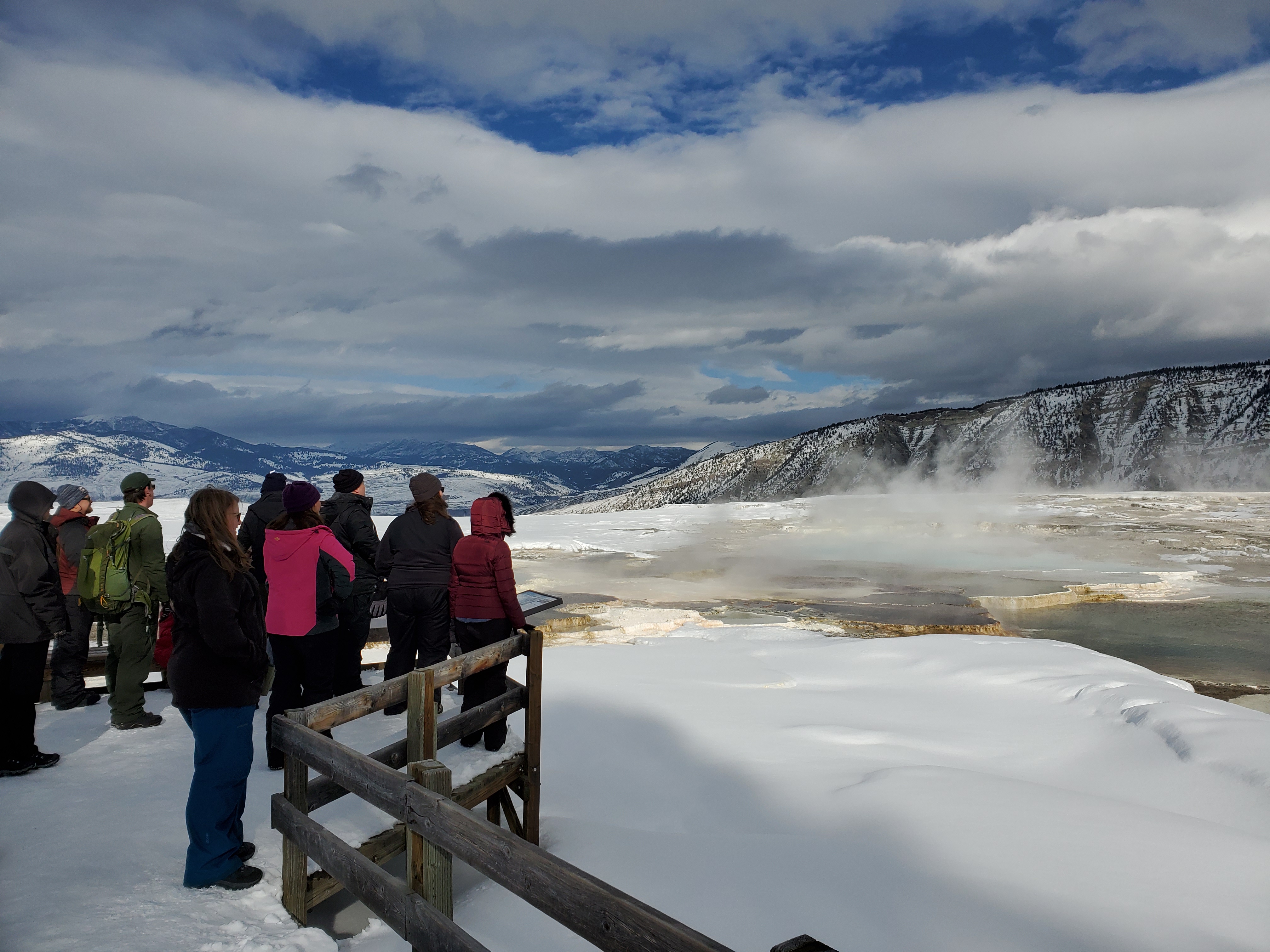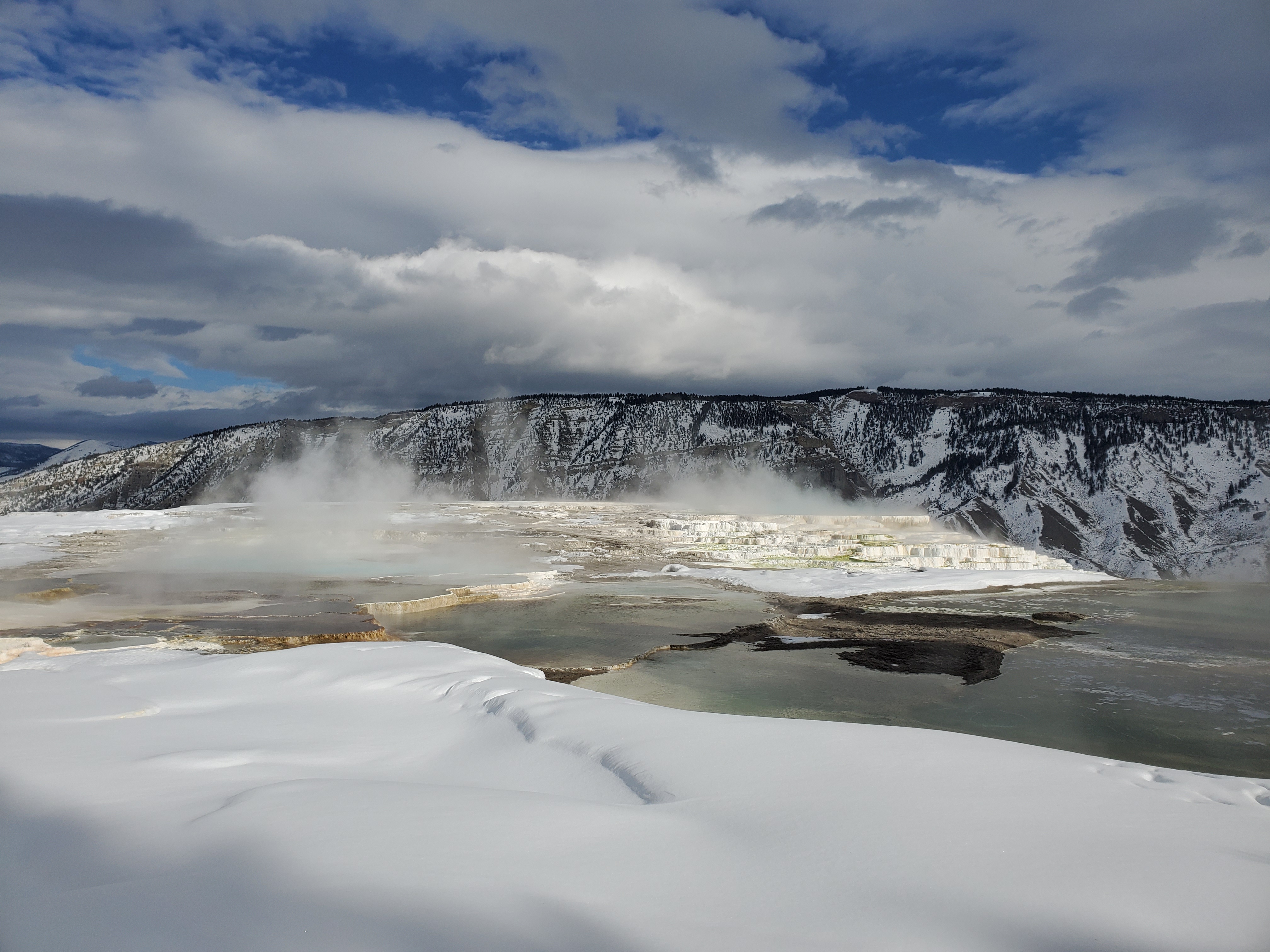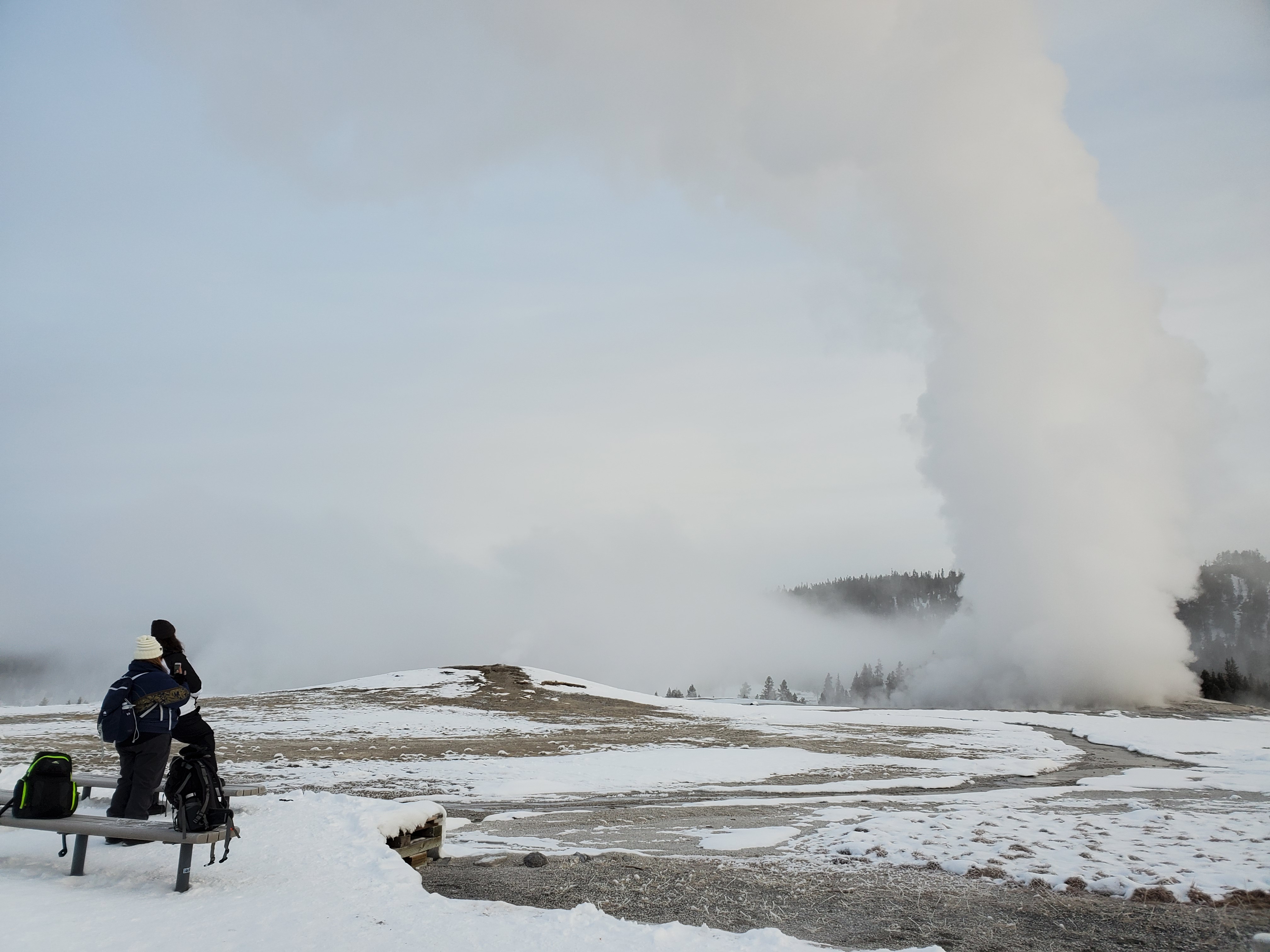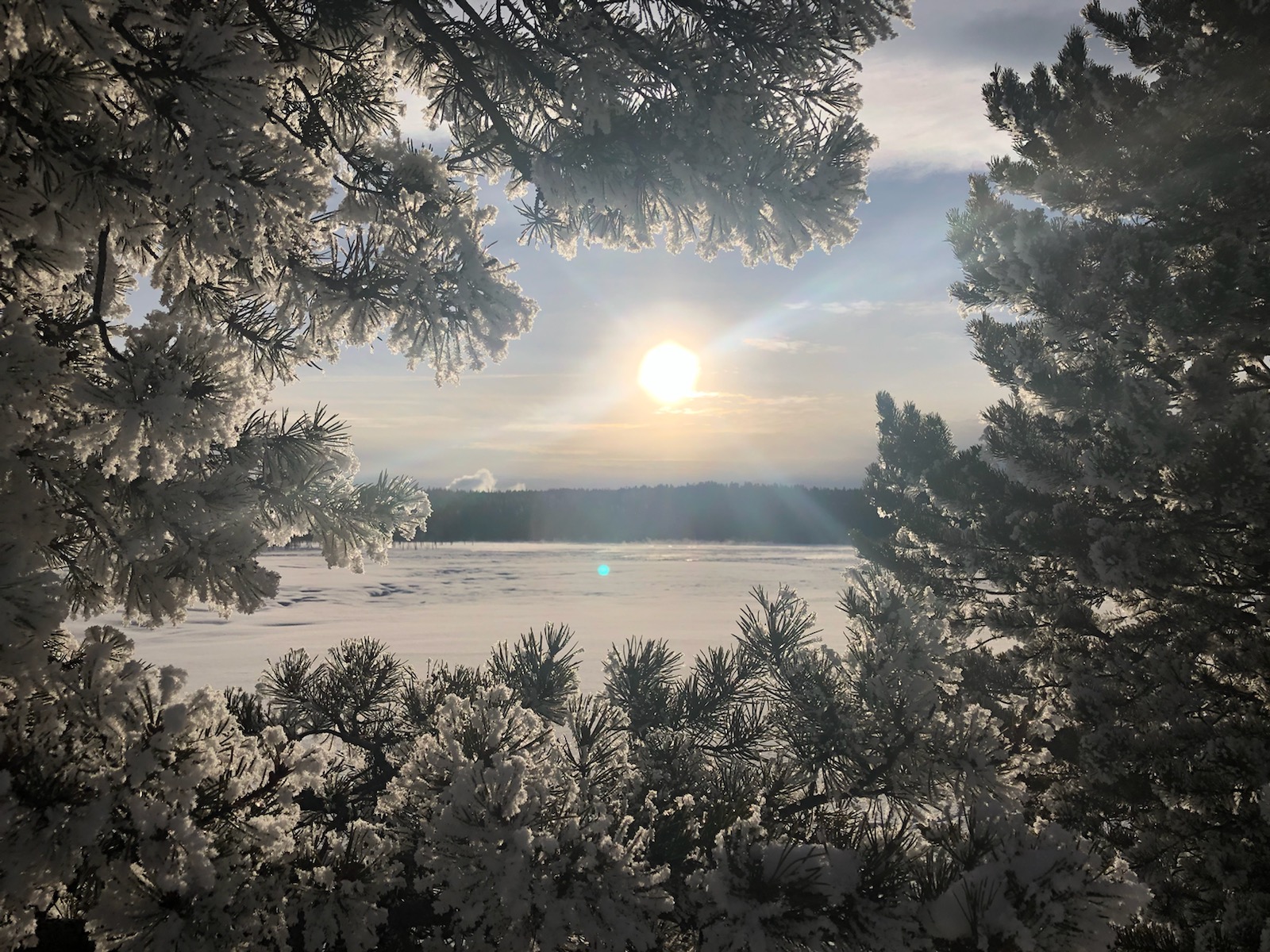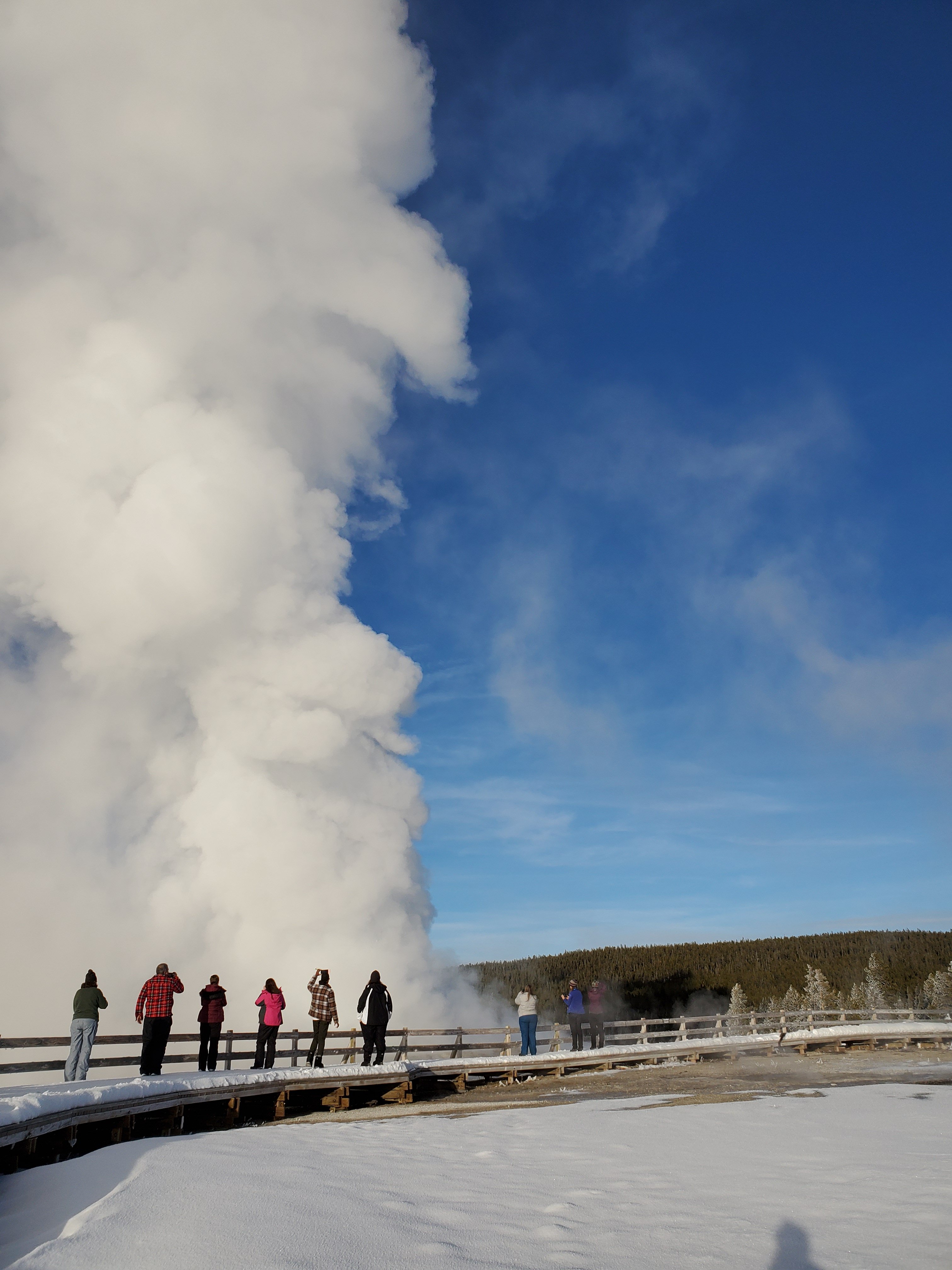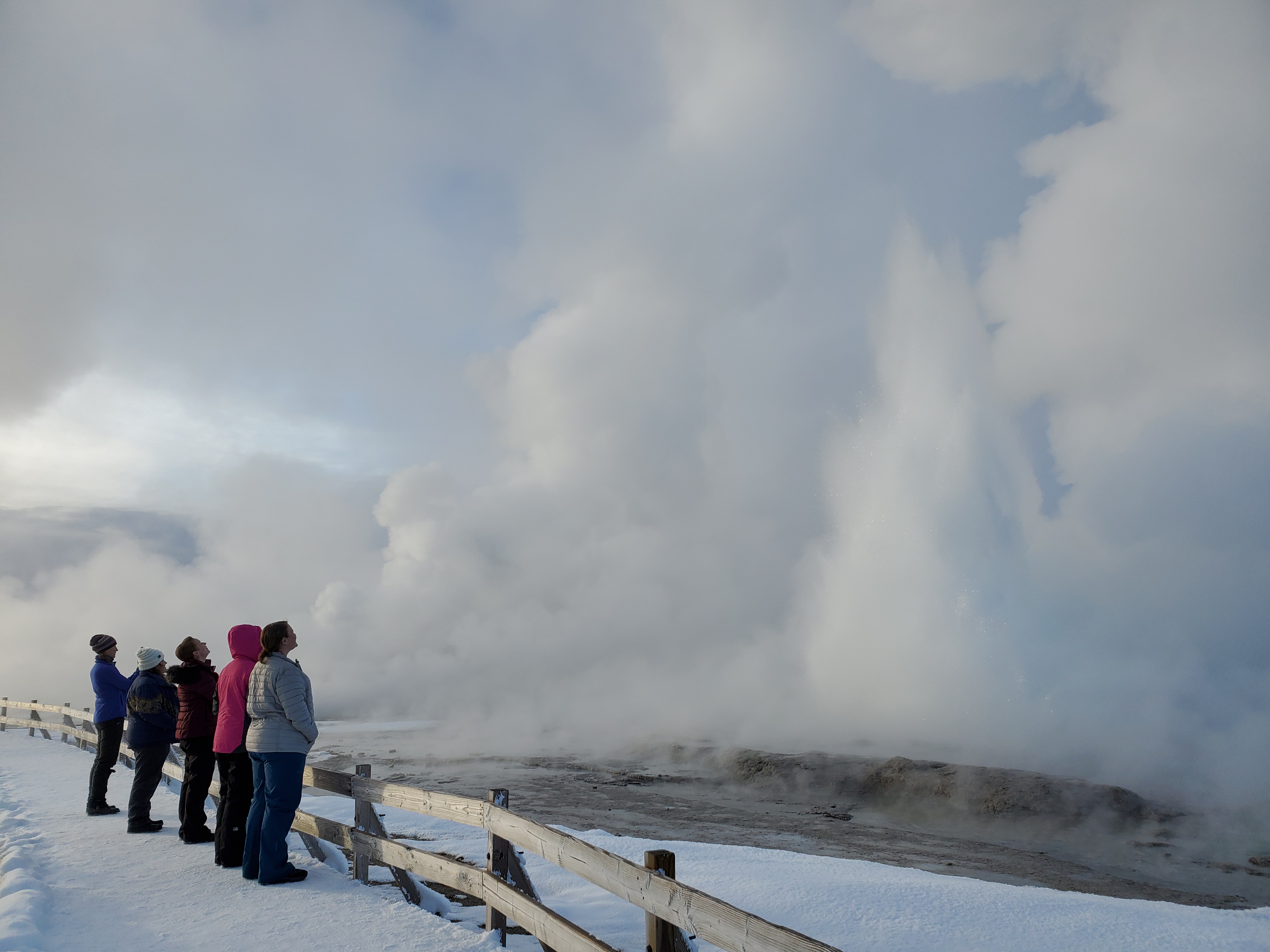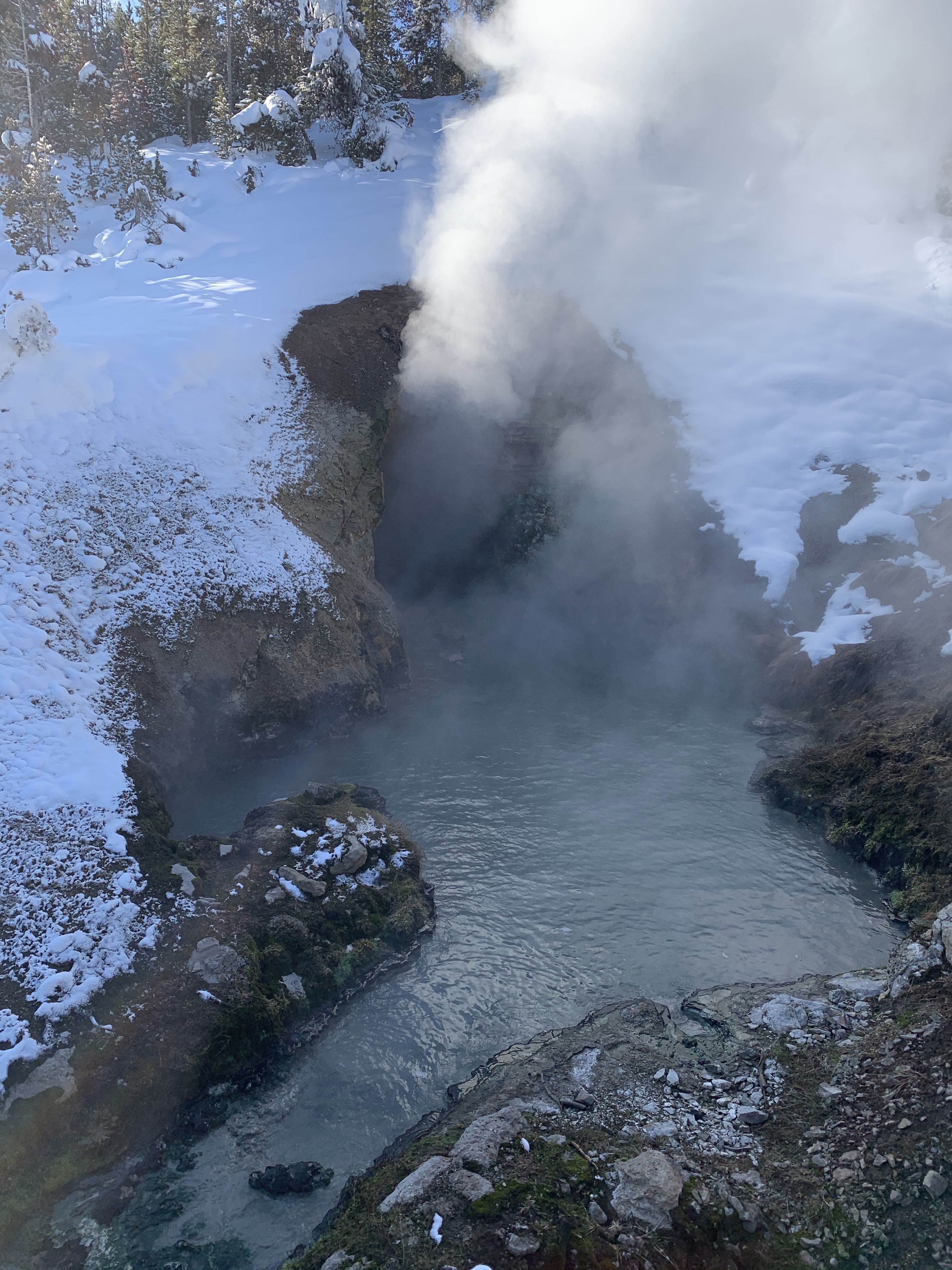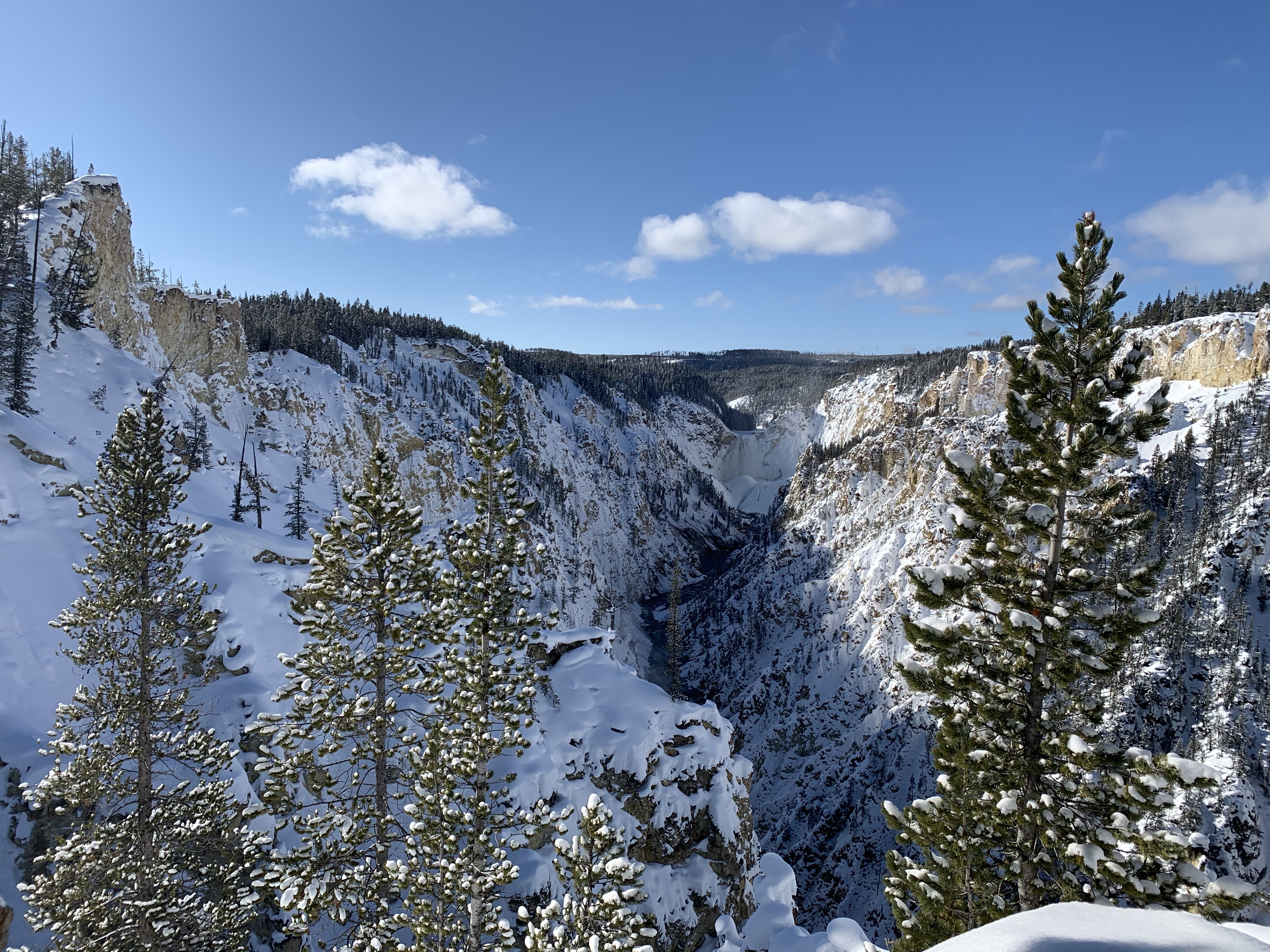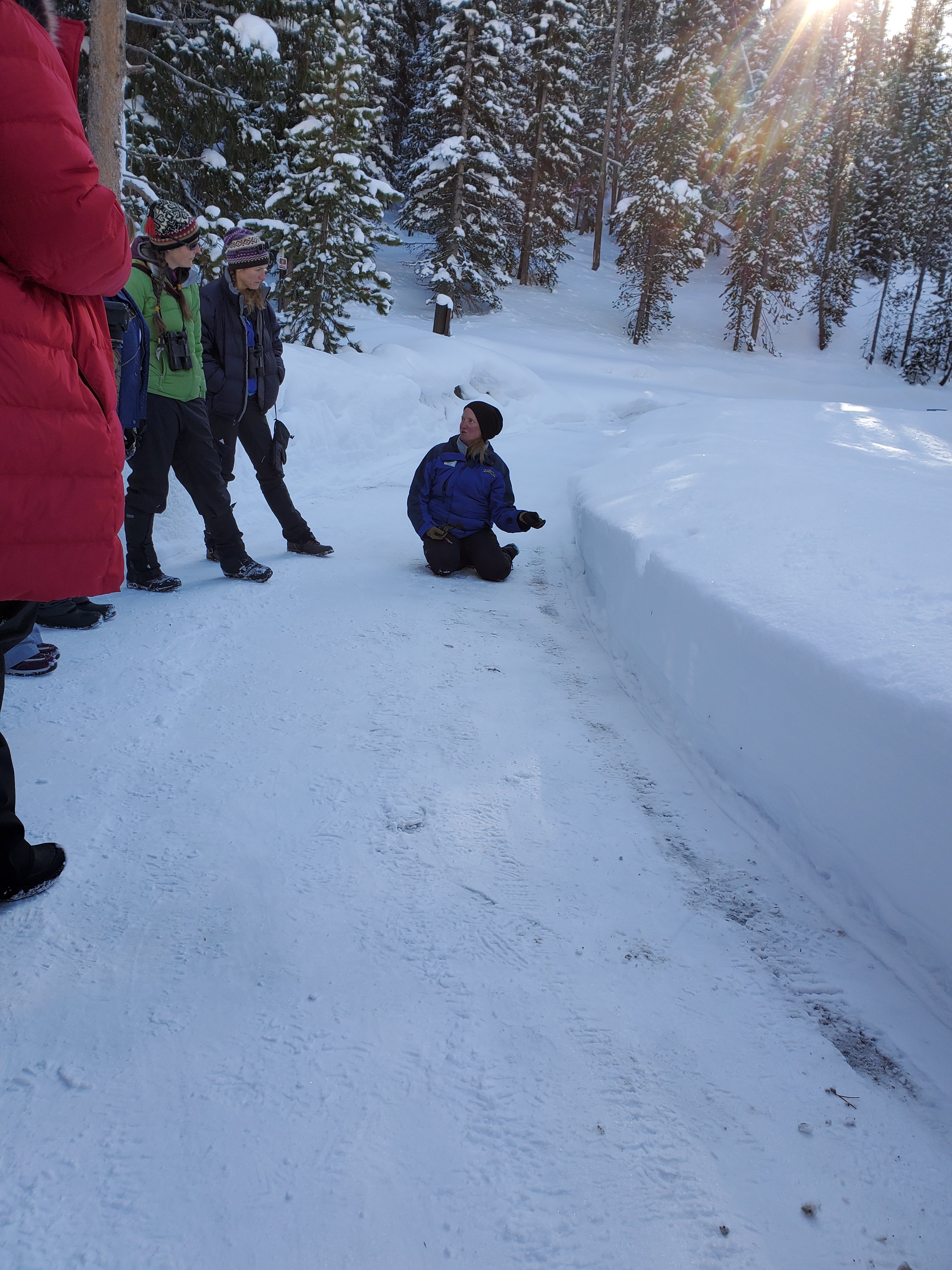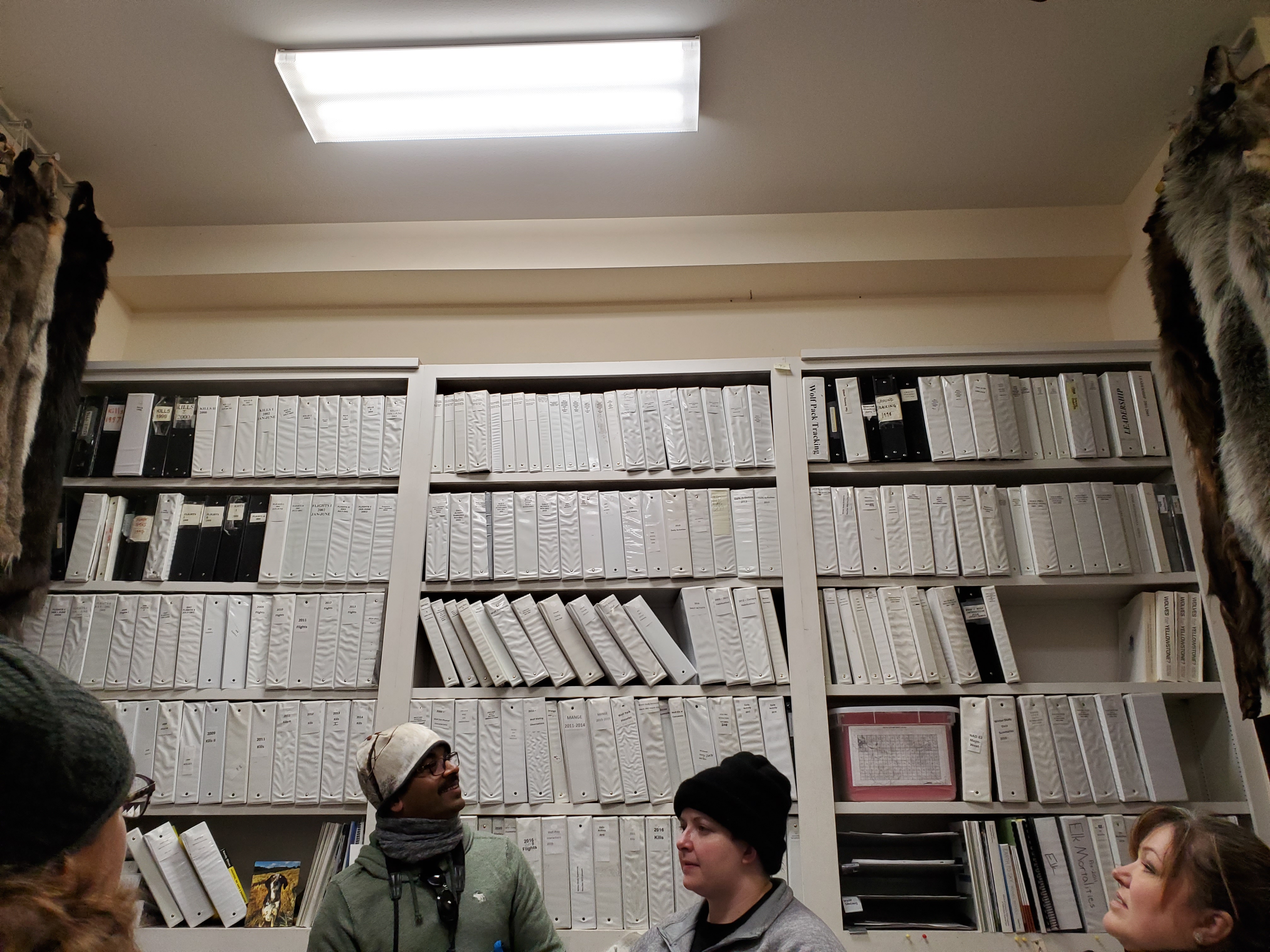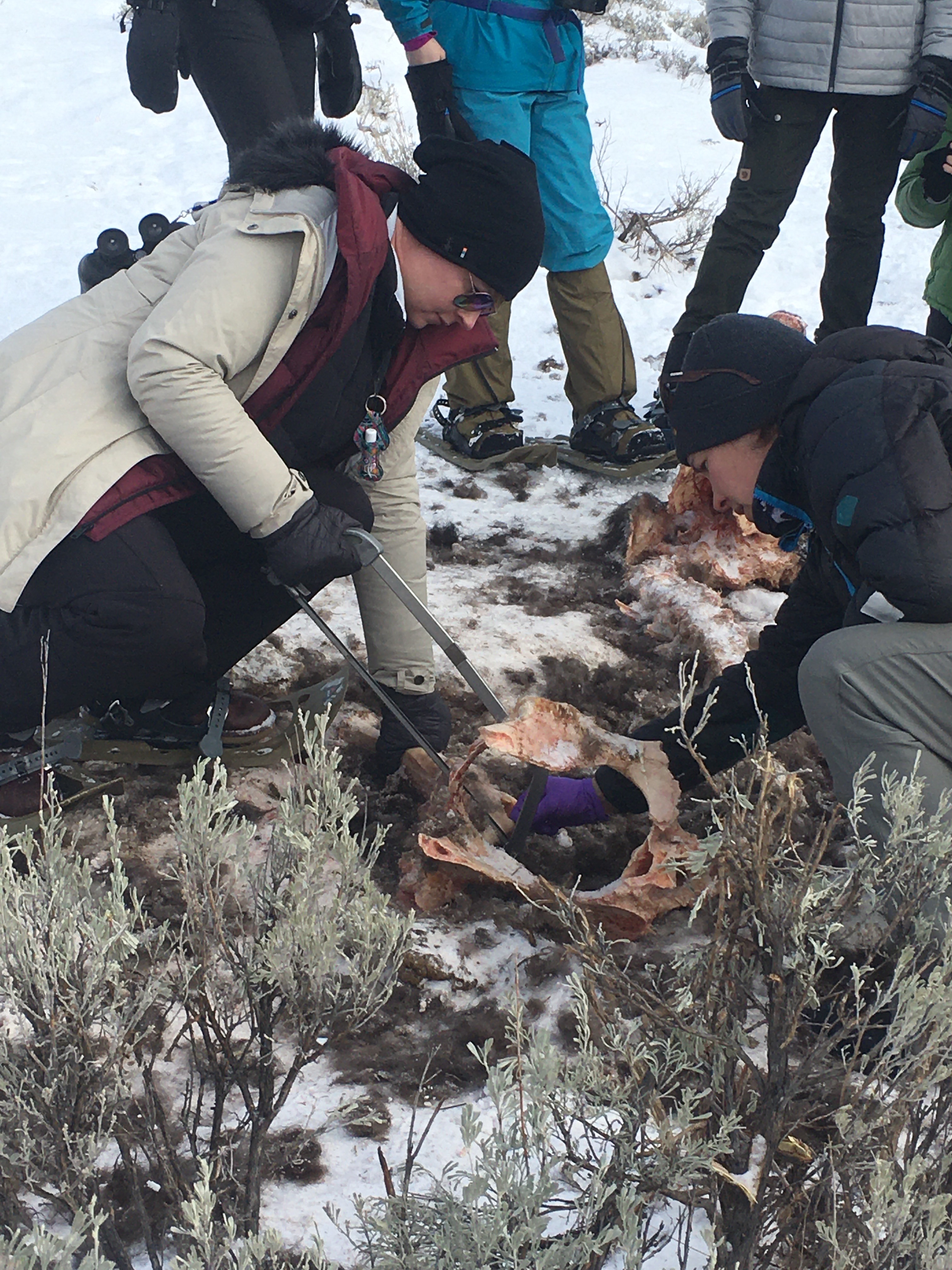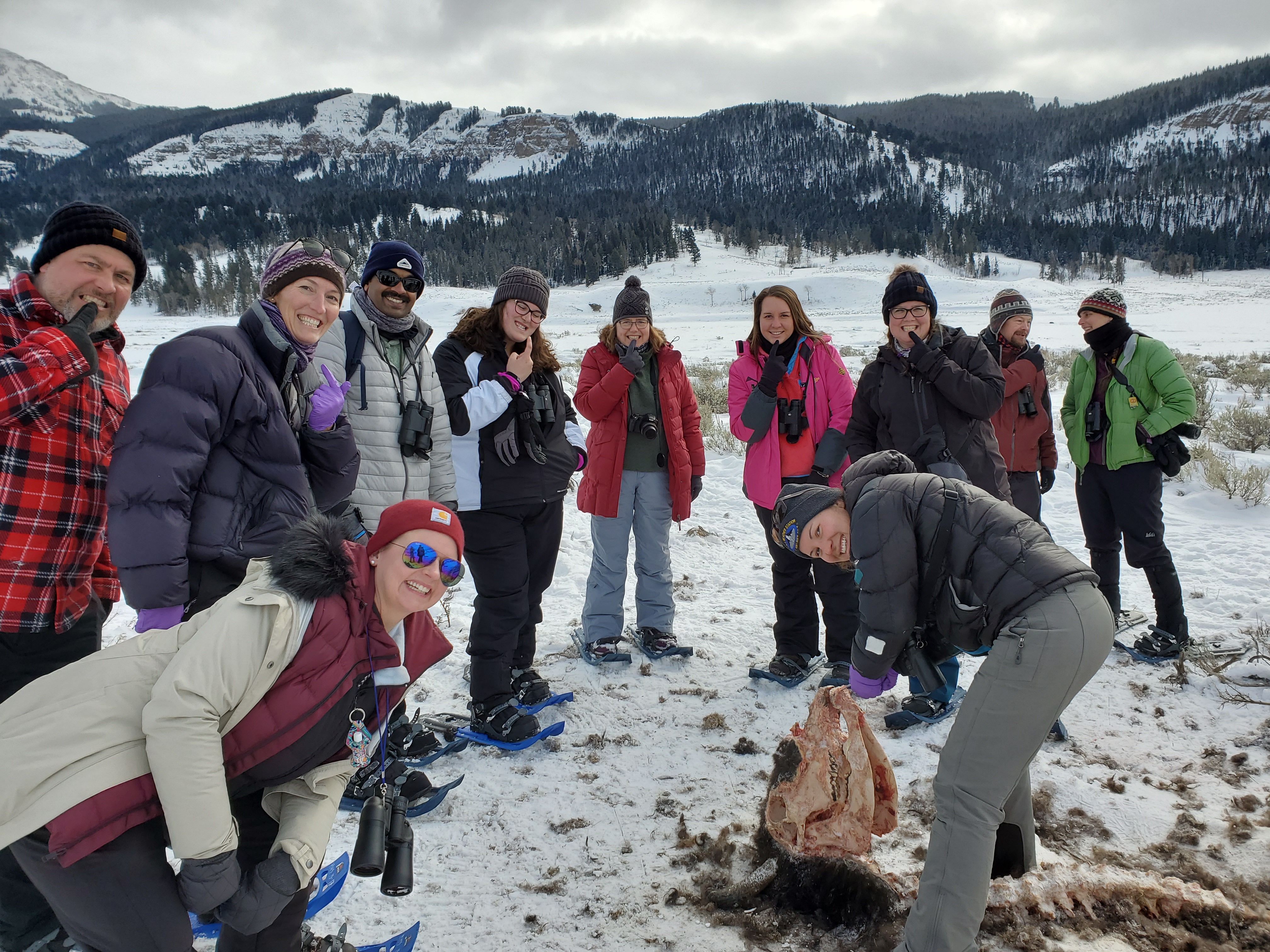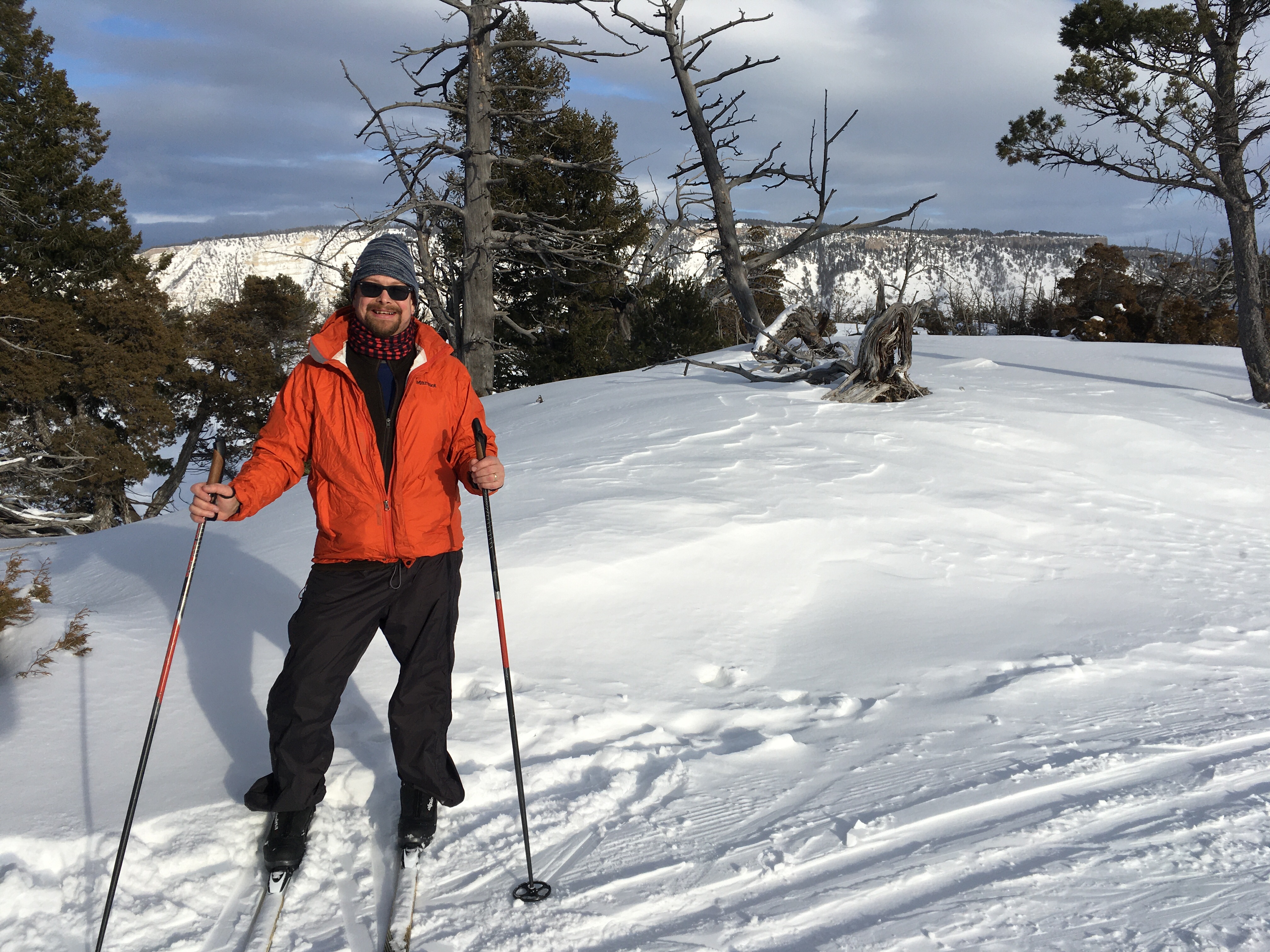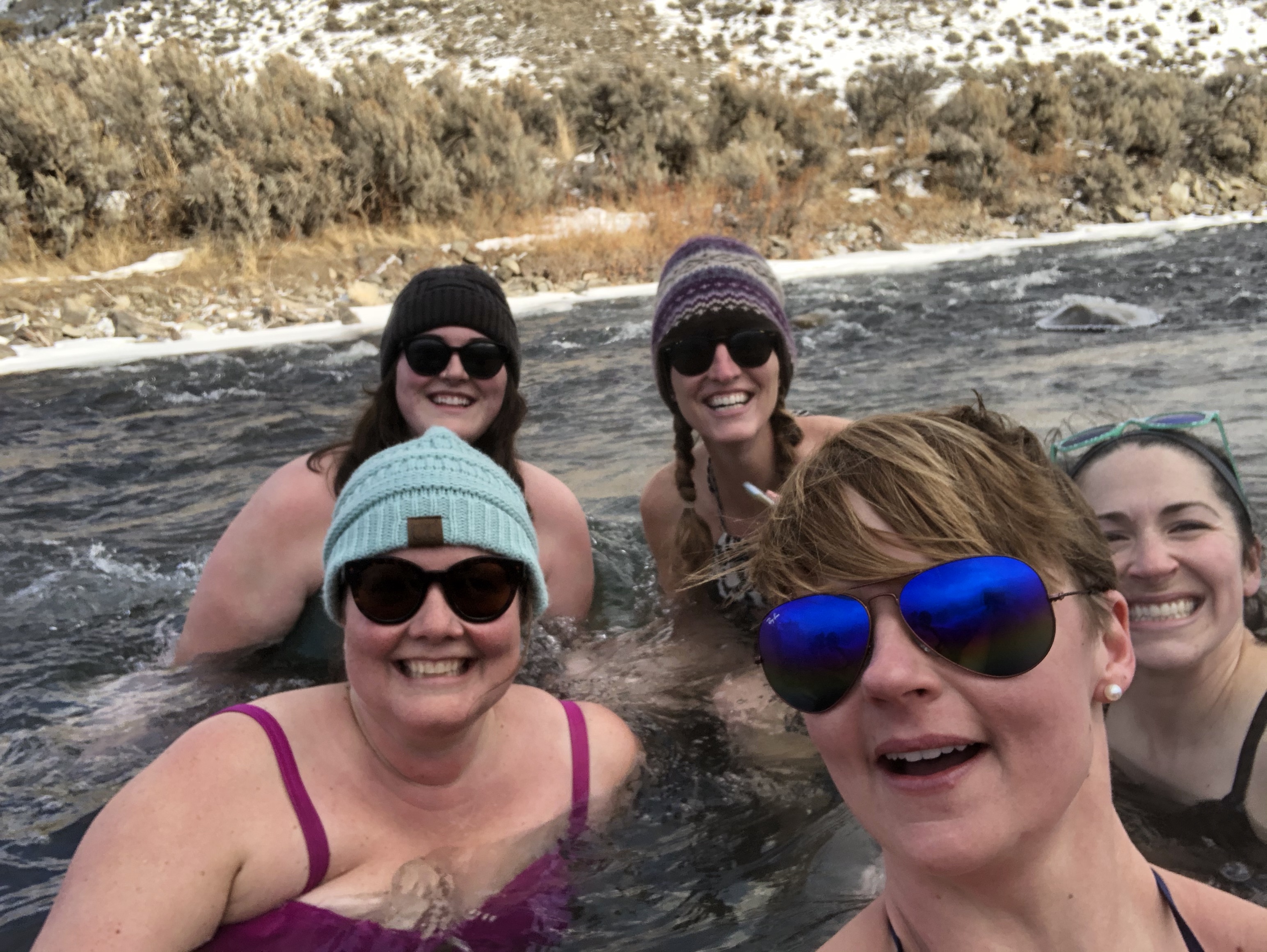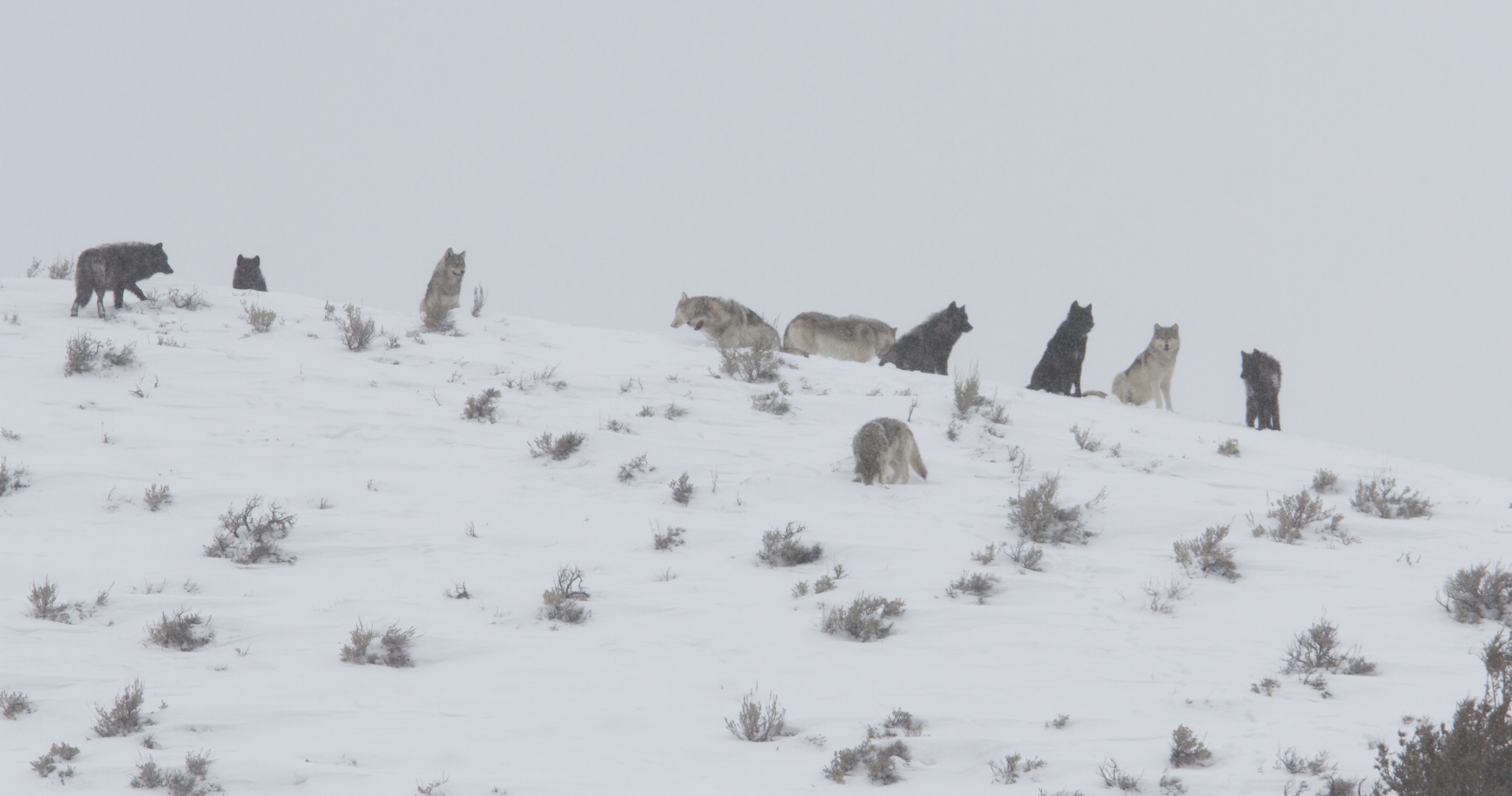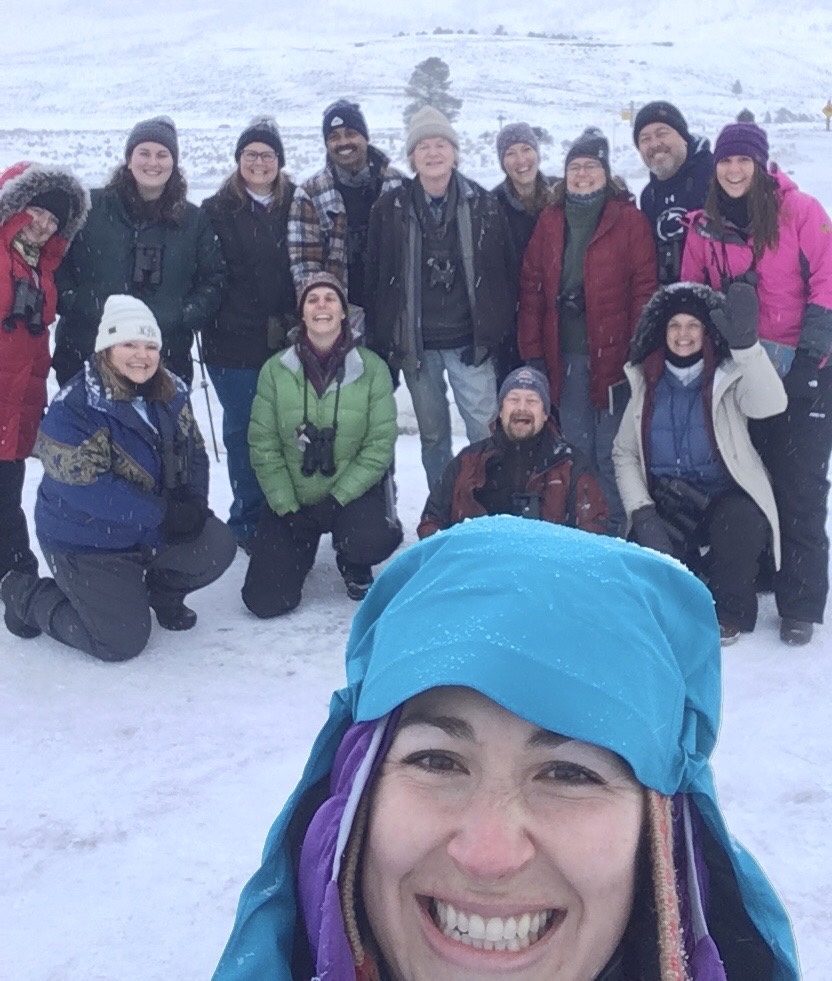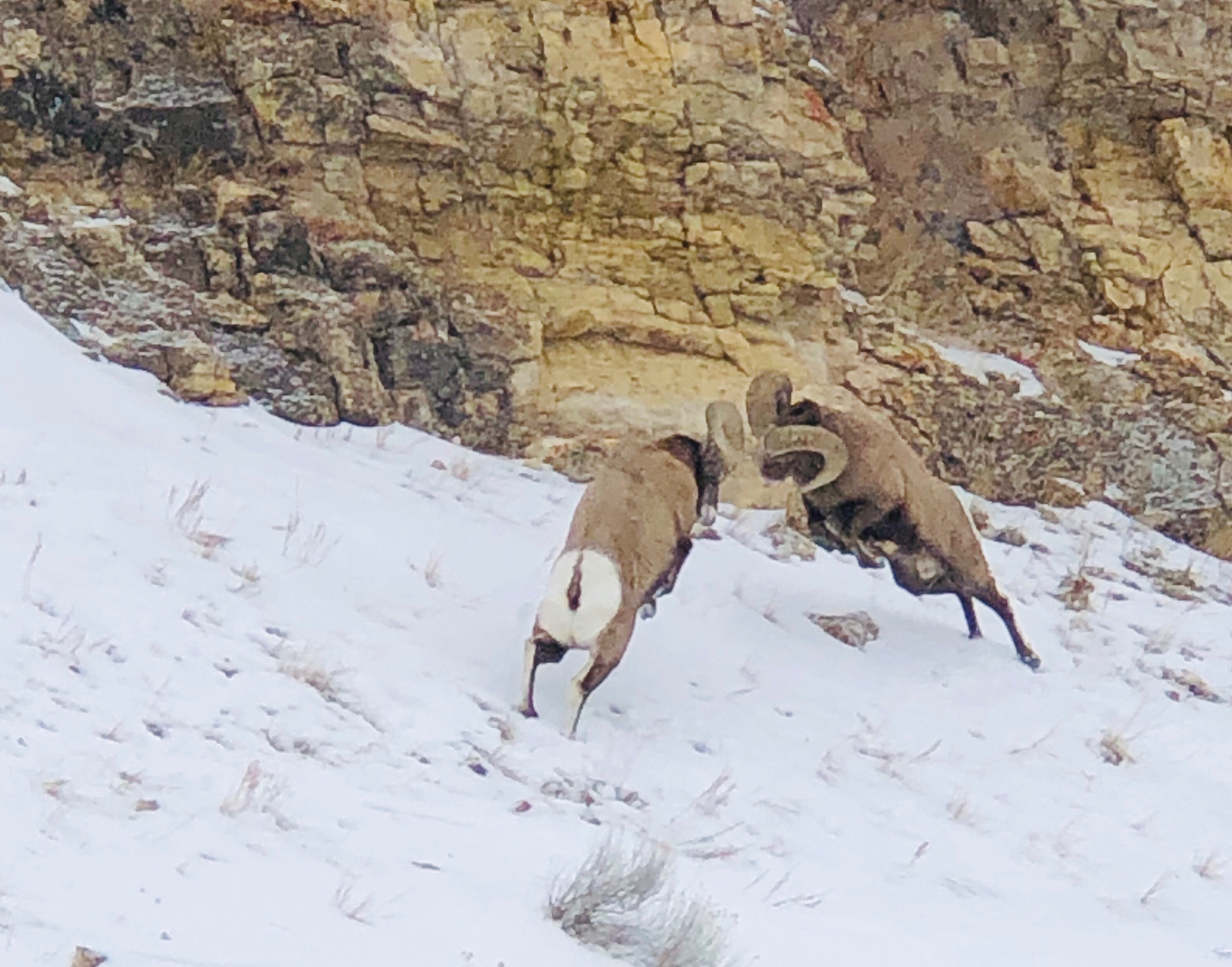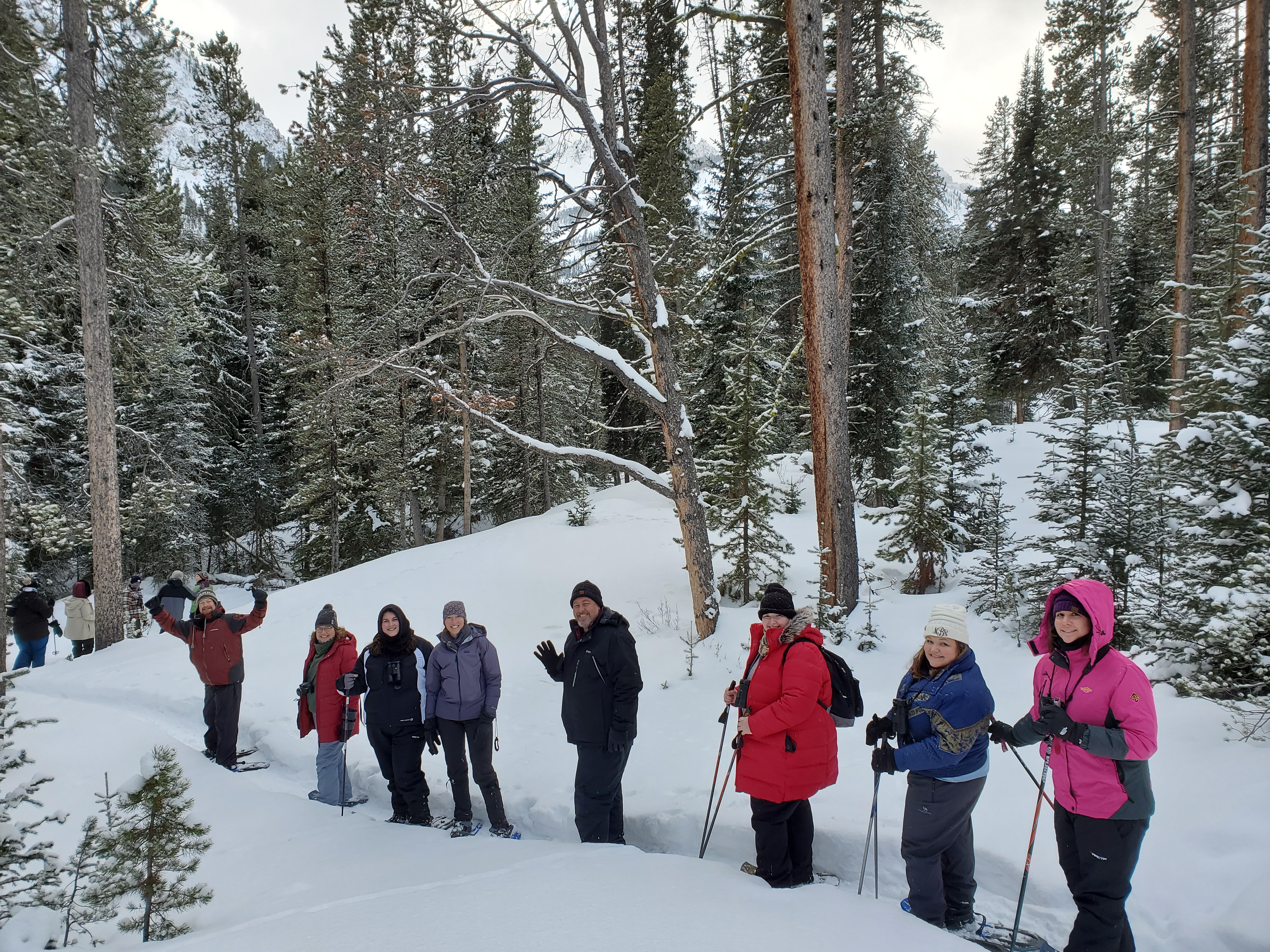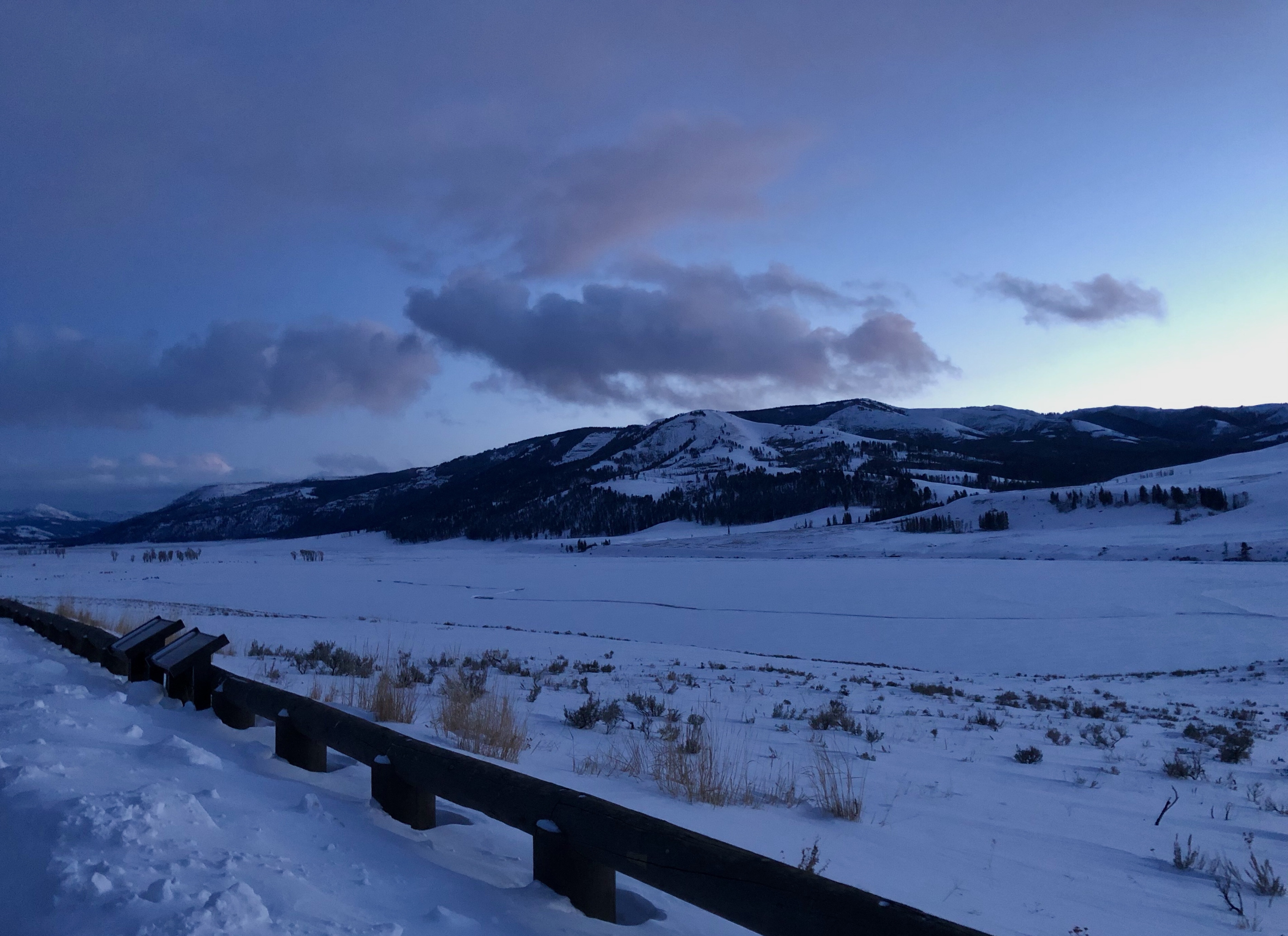Our first day in the park was full of excitement!
We got intel from a hotel staff member that there had been recent spotting of a lynx on the premises. Being the wildlife nerds we are, we loaded up in the SUVs after our 5:55 am breakfast and began the lynx hunt. Though we were unsuccessful in our first exploration, the morning quickly proved itself.
Driving through the park before sunrise seemed a bit uneventful, but after a while, we entered area around Elk Creek and experienced the most amazing sunrise over the Absaroka mountains.
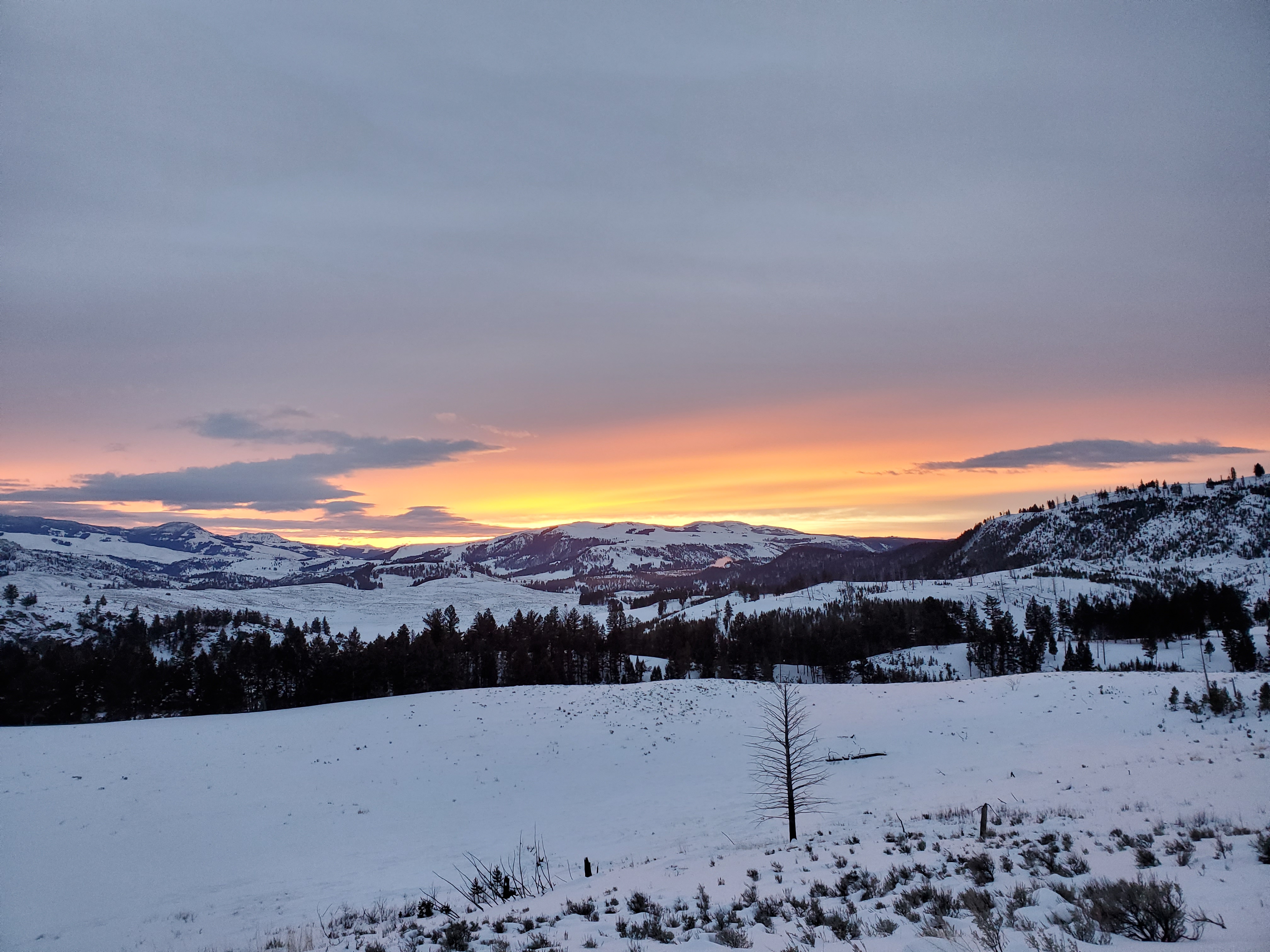
Sunrise over Elk creek
In addition to waking us up, the warm light creeping over the peaks allowed us to witness some incredible wildlife as they too began their day.
Before noon, we documented sights of: American dipper, elk, common goldeneye, bull moose, red foxes, mountain goats, a herd of bison crossing the snow (and took over the road), and a very regal coyote who stood peacefully on the hillside and eventually walked down to our cars!
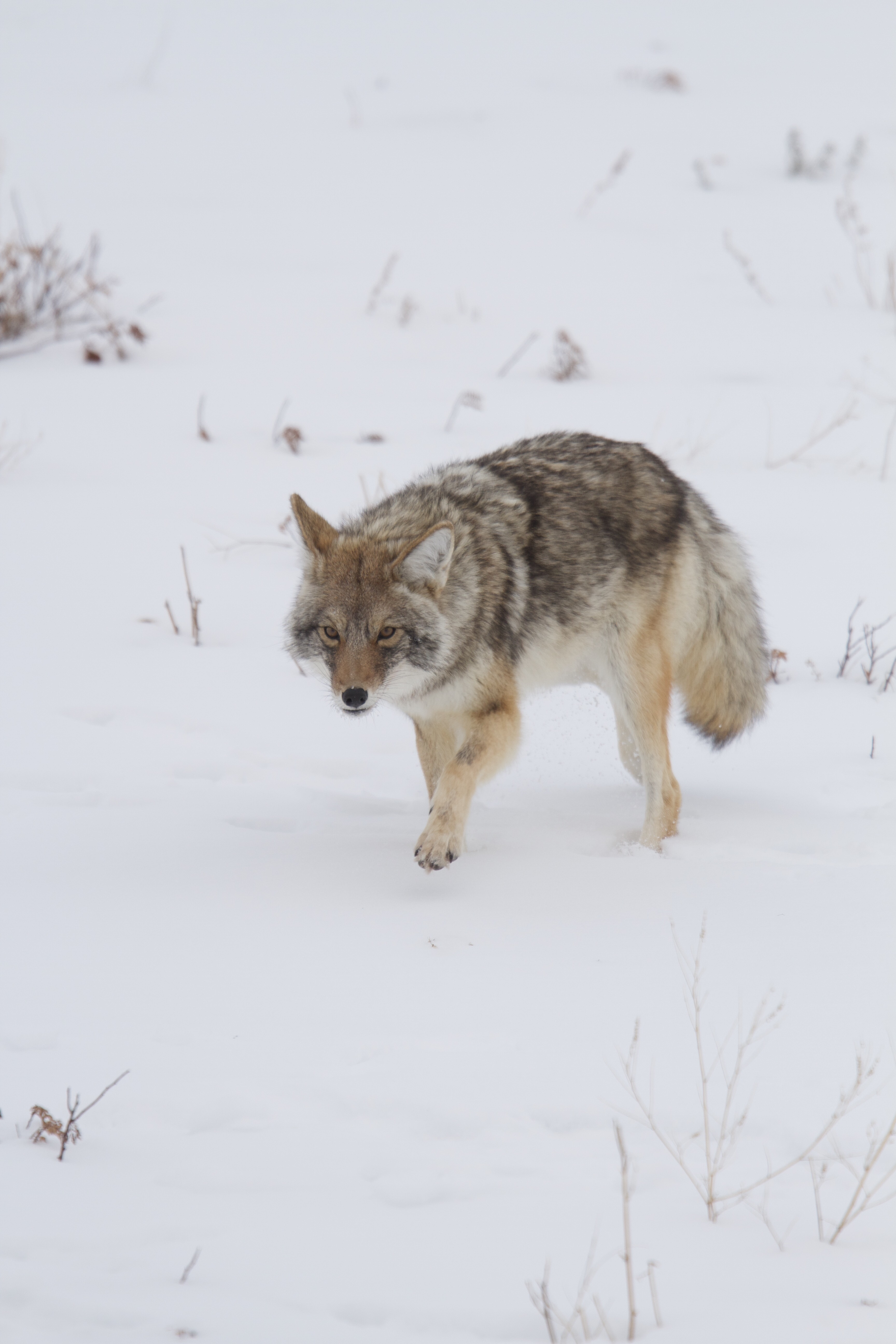
Coyote, not a wolf.
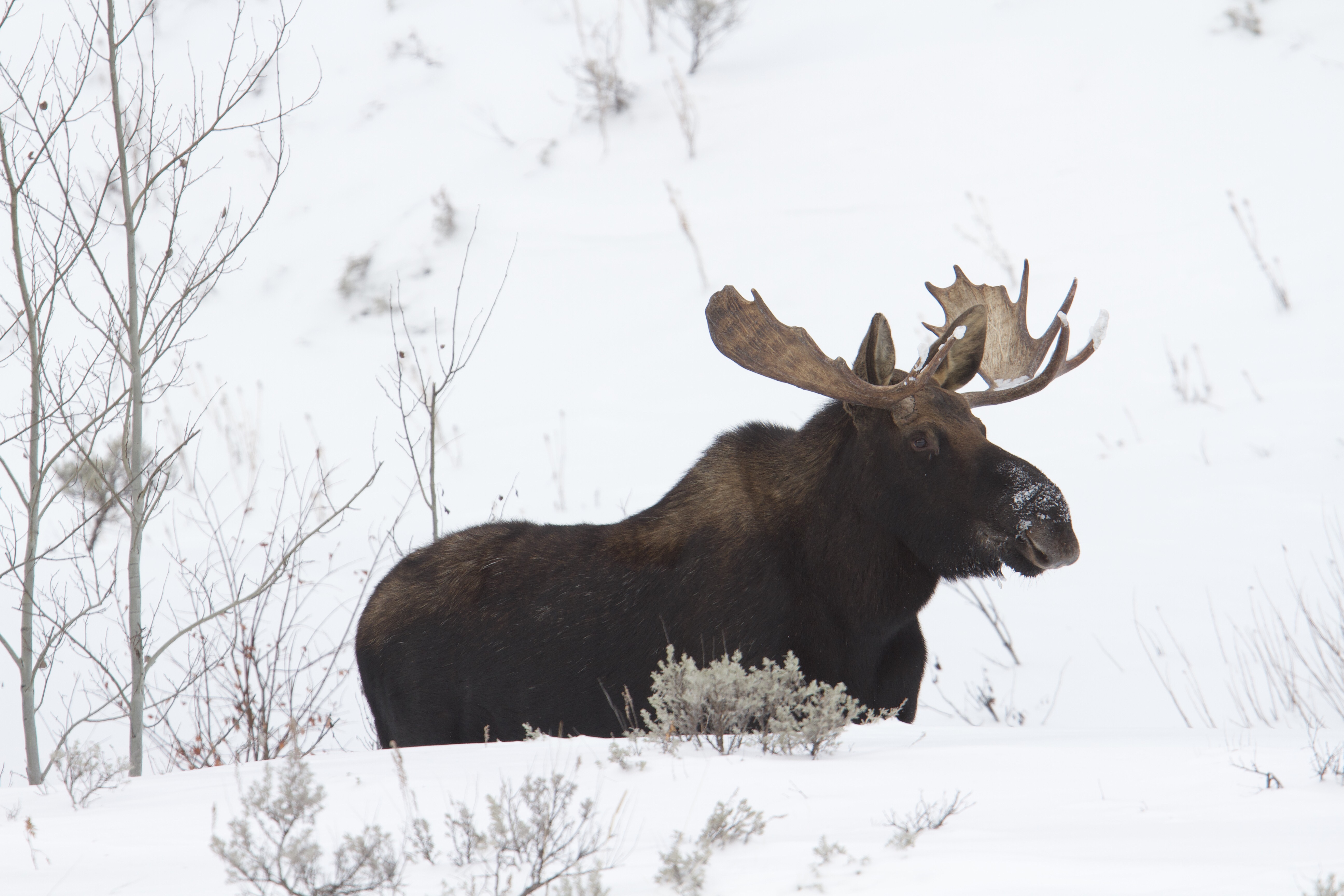
Male moose. We saw 2 others also, for a total of three, but the other two males had already dropped their antlers.
We slowly made our way to Lower Baronette for a challenging, yet incredibly rewarding show shoe experience. With snow in depth past our knees, we embarked on our first trek through the snow. Through the heavy breaths and frigid temperatures, we found solace in this special place. Randy shared with us an activity that NC State Parks leads— a silent walk. Since snow shoeing is far from silent, we opted to rather pause in our tracks and listen… to the cold air blow past our faces, the water rushing from a nearby (mostly frozen) stream, and birds rustling in the trees.
We paused and listened to Yellowstone. We heard what she had to say, and though to many it would seem like nothing, there was great wisdom, stories, and soothing words spoken in that peaceful moment.
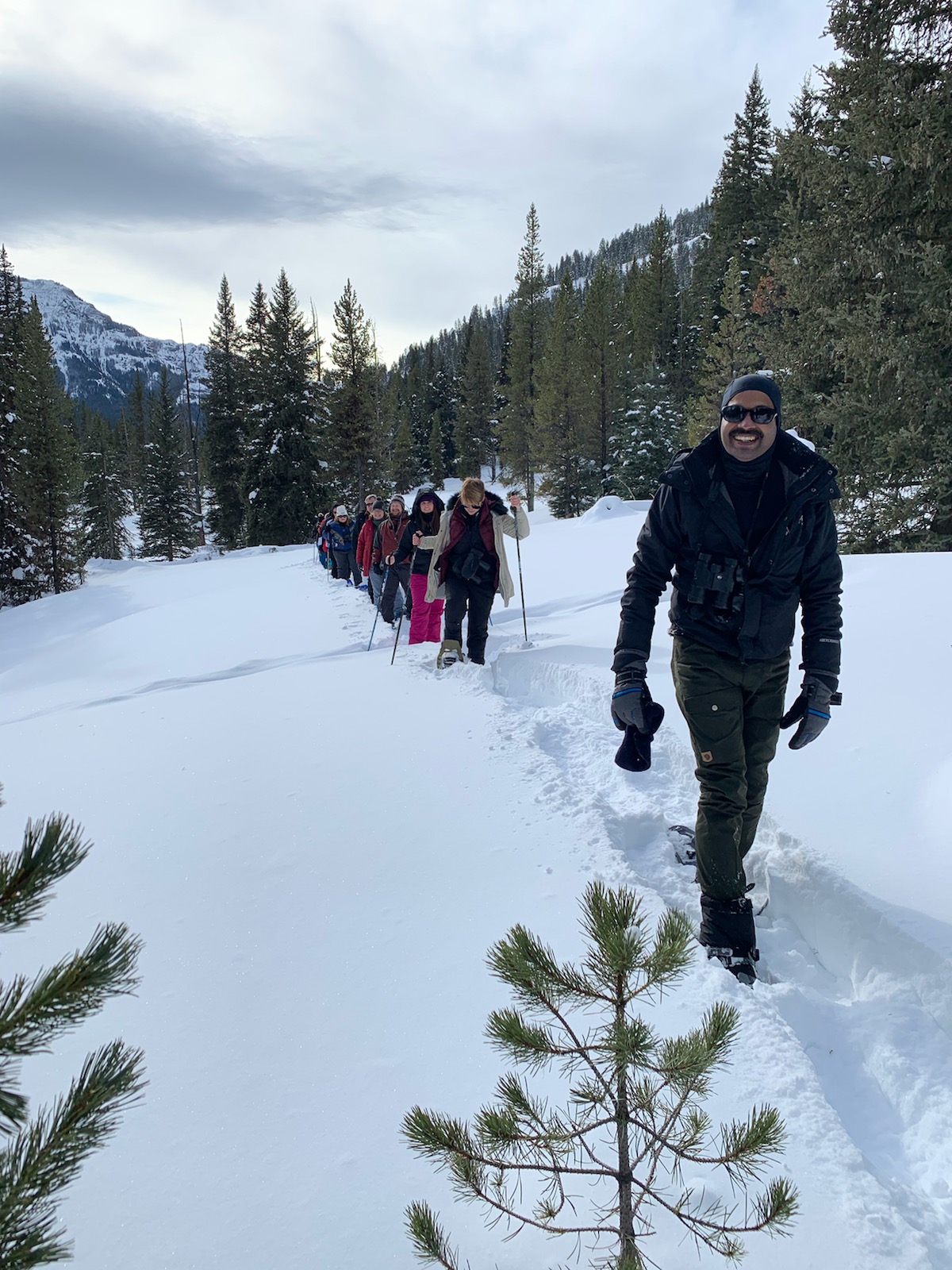
Vin leads the way on our snowshoe adventure
After lunch, we embarked on yet another snowshoe hike to Trout Lake. We were excited to walk right into the path that we had earlier seen a herd of bison and two moose. We were moved to see tracks of bison, weasels, coyote, and wolves. We had entered their domain. At the high point of our trail, over 7,000ft, we paused yet again to reflect in our journals. Amidst the silent snow, once again, Yellowstone spoke directly into the hearts of each and every one of us. We shared our journal entires and embraced the immense gratitude for this experience and those with whom we are sharing it.
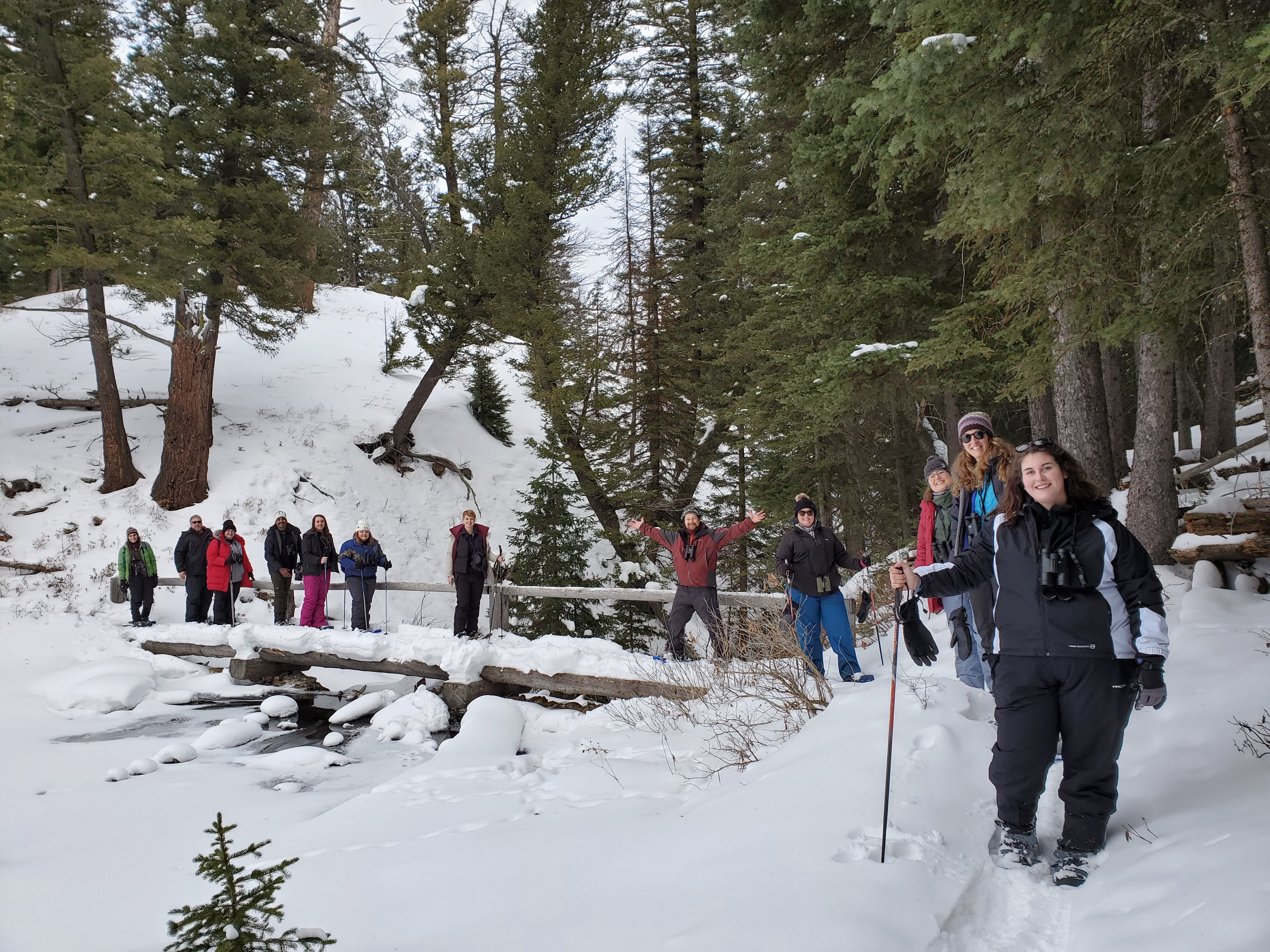
Crossing the footbridge at Trout Lake in snowshoes!
“This place was so much more than I was expecting…”, “If I stayed here forever, I wonder who would I become…”, “I have unleashed a wildness in me that I didn’t know was there.” Moved from the words of our fellow participants, we embarked on our descent back to the trailhead just as the sun began to set, hoping to hear the howl of a wolf.
So though we didn’t technically see a lynx today, thank you Yellowstone, for all you did show us. It is only the first day, and you have already left us in awe. We are eager to hear and see the remainder of your secrets, hidden within these white walls.
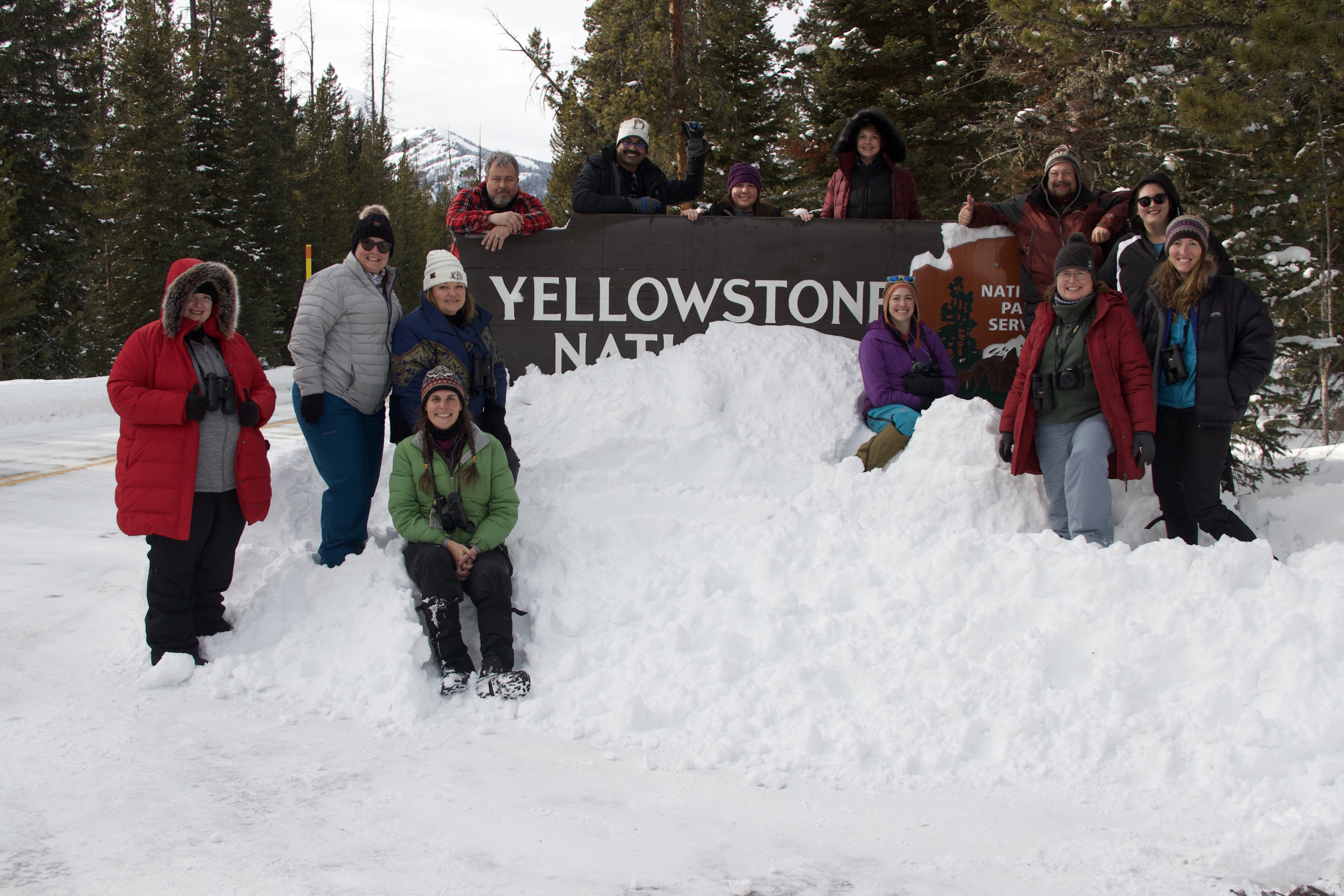
Welcome to a very snowy Yellowstone! This picture is at the northeast entrance sign.
Blaire, Chip, Davanne, Randy
Coyote Team
